new posts in all blogs
Viewing: Blog Posts Tagged with: Illustrator Saturday, Most Recent at Top [Help]
Results 1 - 25 of 58
How to use this Page
You are viewing the most recent posts tagged with the words: Illustrator Saturday in the JacketFlap blog reader. What is a tag? Think of a tag as a keyword or category label. Tags can both help you find posts on JacketFlap.com as well as provide an easy way for you to "remember" and classify posts for later recall. Try adding a tag yourself by clicking "Add a tag" below a post's header. Scroll down through the list of Recent Posts in the left column and click on a post title that sounds interesting. You can view all posts from a specific blog by clicking the Blog name in the right column, or you can click a 'More Posts from this Blog' link in any individual post.

By: Kathy Temean,
on 8/29/2014
Blog:
Writing and Illustrating
(
Login to Add to MyJacketFlap)
JacketFlap tags:
Interview,
inspiration,
Process,
illustrating,
authors and illustrators,
Simon & Schuster,
Hallmark,
American Greetings,
Illustrator Saturday,
Illustrator's Saturday,
Anne Wilkinson,
Add a tag
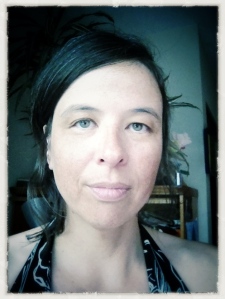 Annie Wilkinson is the youngest of eight children and the mother of two. She works in a variety of mediums including traditional and digital, creating bright and whimsical illustrations for both books and products. She also has a background in design and as a fine artist, two skills that she calls upon quite frequently when illustrating. She is currently working on her own picture book.
Annie Wilkinson is the youngest of eight children and the mother of two. She works in a variety of mediums including traditional and digital, creating bright and whimsical illustrations for both books and products. She also has a background in design and as a fine artist, two skills that she calls upon quite frequently when illustrating. She is currently working on her own picture book.
Clients include:
Simon & Schuster – Macmillan
LadyBird Books – Hallmark
CJ Educations – American Greetings
Oxford University Press – Hasbro
Yeowon Media – National Geographic
HERE IS ANNIE EXPLAINING HER PROCESS:
All of my work is done on the iPad. For the project for Story Corner, the guidelines were really loose – the story was to take place in outer space, after that I had a lot of free reign to draw whatever I like.
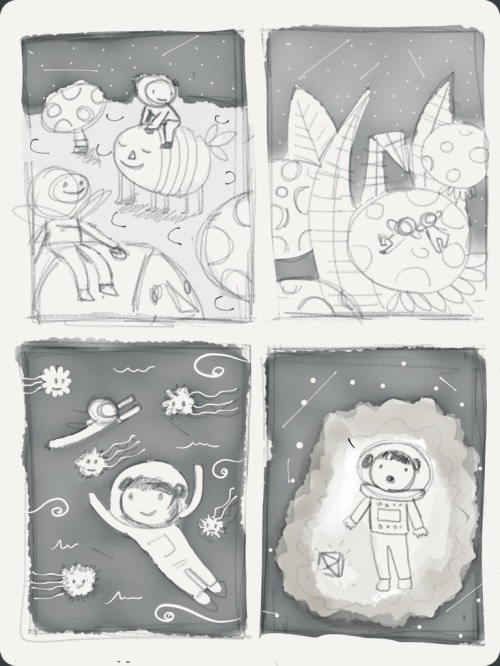
So I started with some quick thumbnails, using the app Paper by 53. I had some loose concepts – riding space beasts, hanging out in a space garden, swimming with ‘star fish’.
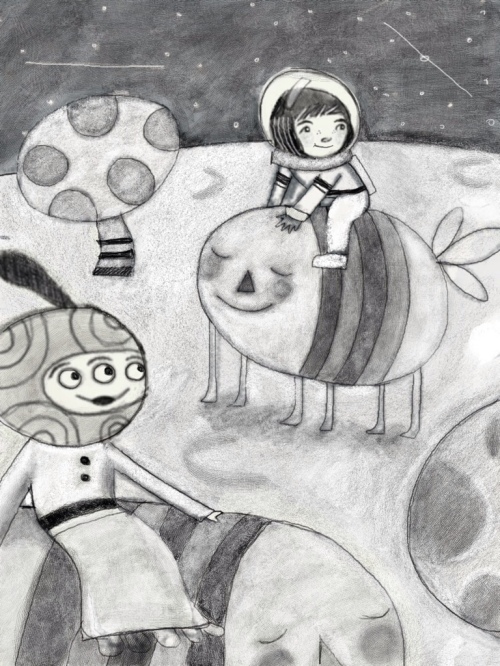
I like to share the thumbnails with the client to see if they’re happy with the general idea and composition, and if they are I then work on more refined sketches. Mostly I use the Vellum app to create my sketches.
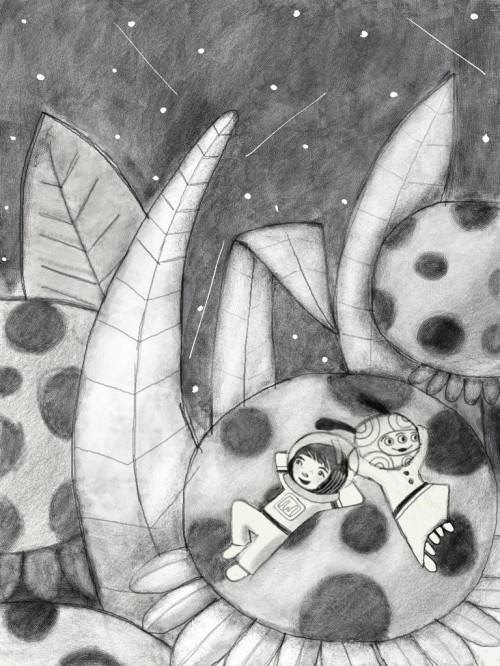
There’s also an app called Art Studio that functions like Photoshop, I can make selections and move things around if I need to refine the composition a little.
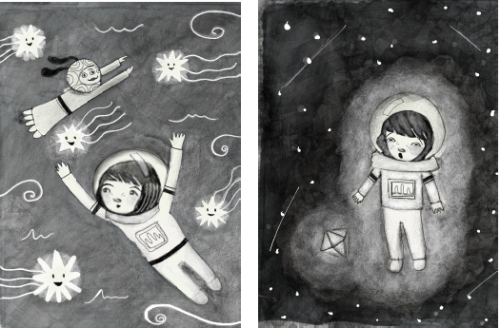
When the sketches are finalized, I create the colour versions in Paintbook, which is a vector drawing app.
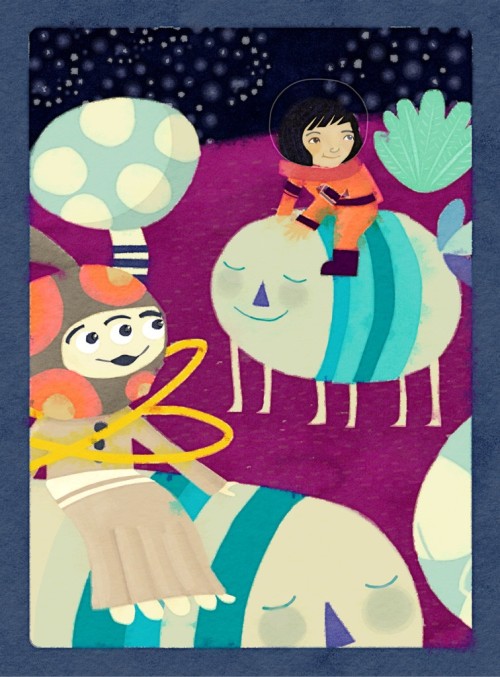
Sometimes at this stage, depending in the spread size, I might have to export the pdf file to my computer and add textures in photoshop.
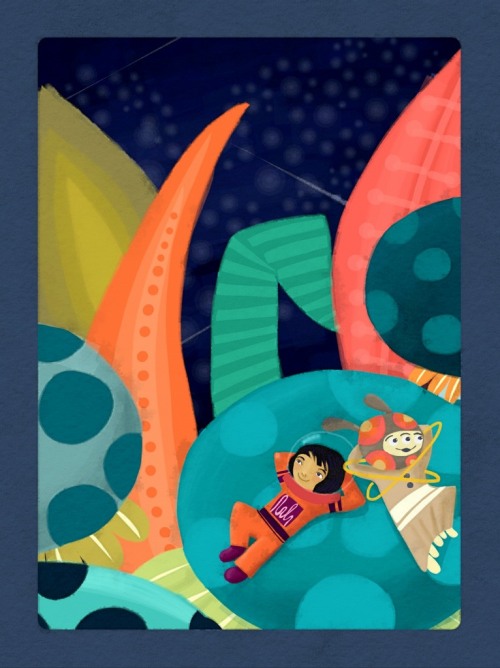
Since these we’re going to be playing cards, The iPad could actually handle their print size, so I added my textures using iColorama.

If I find the textures wash out some of the details then I will paint over some of the edges and add more shadows and highlights using either Photoshop or procreate.
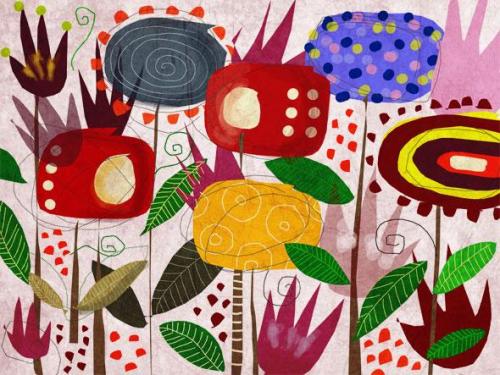
How long have you been illustrating?
I have been illustrating as a job for about 6 years, but for about 5 of them I was also working as a web & graphic designer . This is the first year that I am solely illustrating. I have always loved drawing!
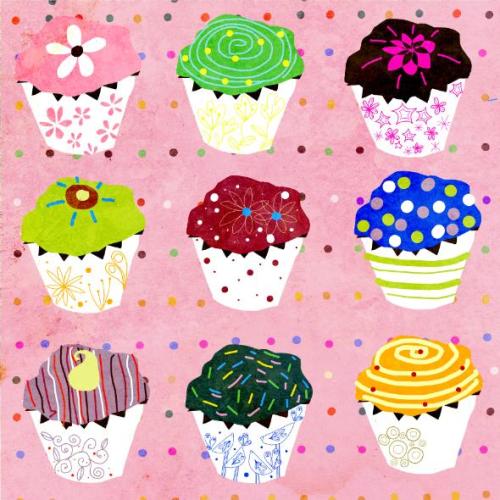
Where do you live?
I live in Vancouver, BC Canada
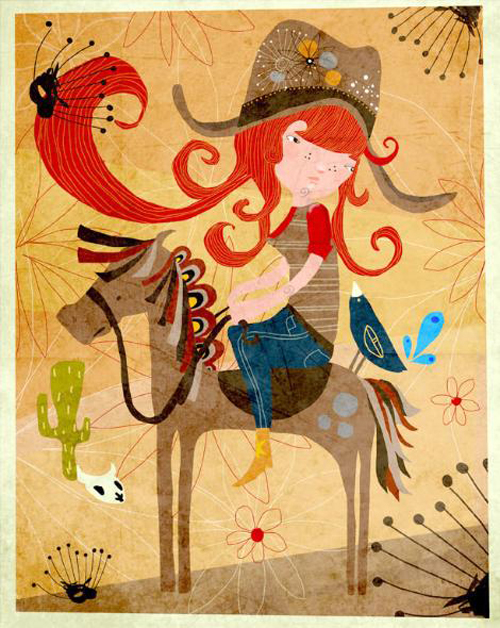
Did you go to school to study art?
I have not. I am completely self-taught, but I do dream about going to art school some day – maybe when the kids are old enough.
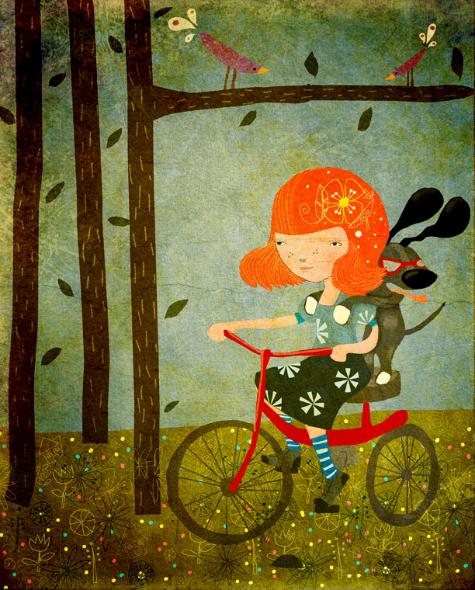
What area of art did you study?
I took an independent course with Geraldo Valerio “http://www.geraldovalerio.com” a Brazilian illustrator who was for a time living in Vancouver. I had belonged to a drawing Meetup group, and on a message board there, several people had mentioned taking his course on illustrating children’s books and how it was better than anything offered by the universities or libraries.
After my first illustration job, when I started to realize it was something I might really like to do, I thought I should learn more about it and enrolled in his course. It was extremely helpful to have someone with experience to turn to! Even though he’s no longer in Vancouver, we still email every now and then and I still ask him for advice.
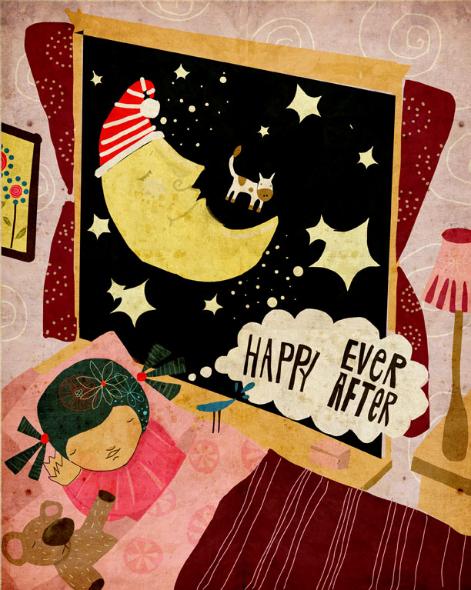
What was the first art related work that you did for money?
Prior to working as an illustrator, I played in bands for many years, and toured a lot. These would have been my first paying art jobs.

What was the first job you took after you graduated from school?
I did take a multimedia course about 15 years ago that was a very basic introduction to Adobe & Macromedia (who originally created Flash) software – it was just enough to get you going on everything and it was up to you if you wanted to take it further. I had expected that I would move into web design from there, but my first job after finishing that program was illustrating and animating Ecards in Flash for a Toronto company. It’s funny now that I think about it, it didn’t give me the idea that I would be an illustrator! I think probably because looking back at it my illustrations were fairly crude!
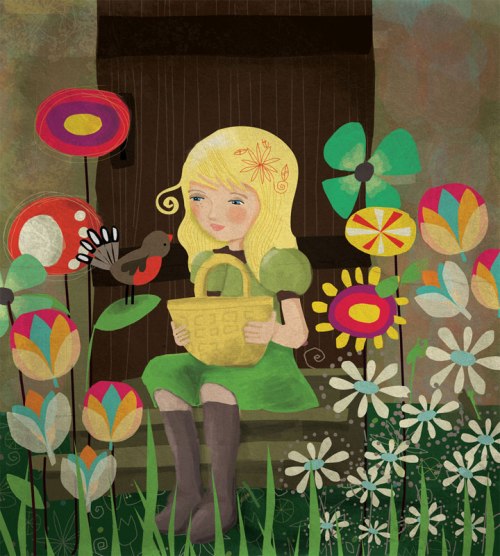
How did you find your first illustrating work?
Robeez Baby Shoes gave me what I consider my first real illustration job – they had a job posting for a web designer, and I applied and sent them a link to my online portfolio, which also contained some of my artwork. They got back to me saying the job had been filled but would I be interested in doing the illustrations for their shoes. Prior to this it hadn’t even occurred to me to be an illustrator! (Robeez shoes designs)

Have you done any illustrating work for a US publisher?
I have done work for a few publishers, including Simon & Schuster, National Geographic, as well as a handful of educational publishers.
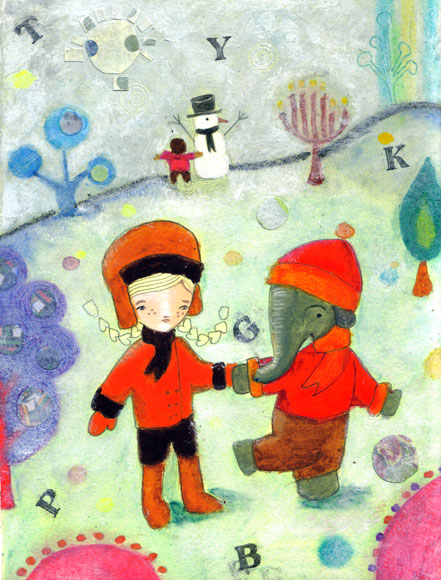
How did you start doing greeting cards?
Not long after the Robeez job I was contacted by the Bright Agency in the UK http://www.thebrightagency.com, and I have been with them ever since. Another illustrator who was also working for Robeez, Ken Gamage http://www.sparklefishworld.com told me about http://www.childrensillustrators.com which is based in the UK, and I believe this is where Bright found me. Bright works in both publishing and art licensing, so my greeting card work was through them.
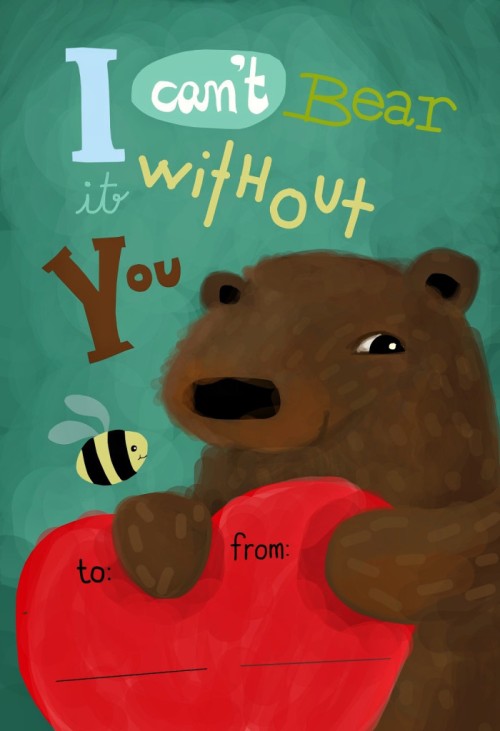
What made you want to illustrate children’s books?
I had not thought originally that I could even be an illustrator! I was always drawing but in my mind it was just a hobby. I met another illustrator when our bands played a show together, Jenn Playford, http://www.jennplayford.com, who I think at the time had just got her first illustration job, and her telling me about it put the idea in to my head. I didn’t really do anything about it until I got the Robeez job though! I guess children’s books seemed the best fit for me, given the way I draw, which tends to be cute and colorful.
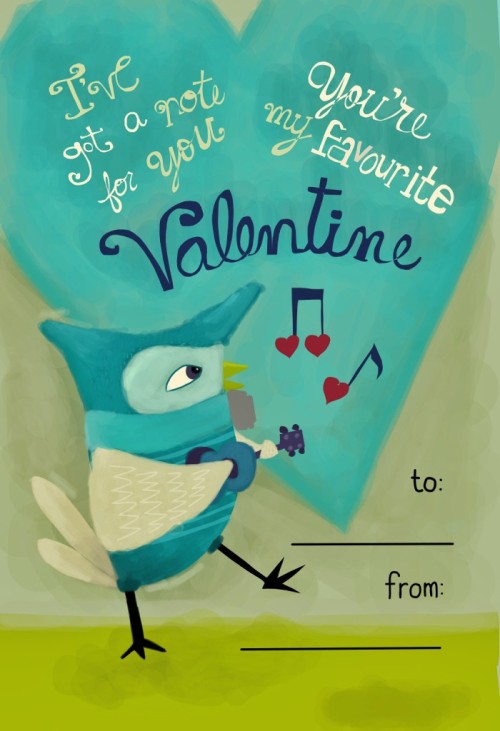
How many books have you illustrated?
I’m not sure I can count them all! I’ve done around 4 books for the Korean market, 1 in New Zealand, 3 in Canada, a few in the UK, and maybe 10-15 for the US market, which would mostly include the educational market.
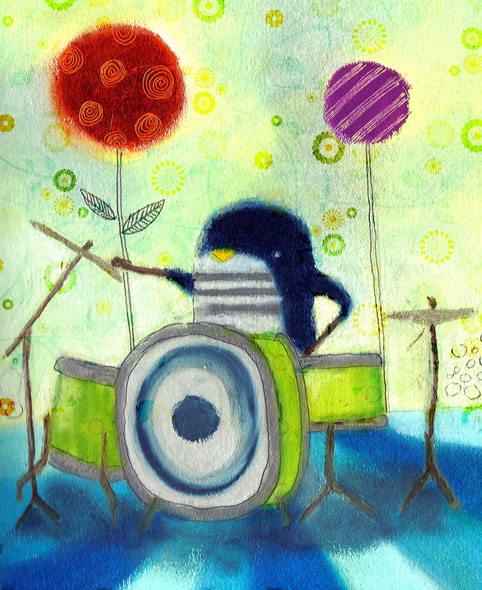
What was your first picture book?
My first picture job was with Rubicon Publishing in Canada, with AD Rebecca Buchanan, now over at Pajama Press, she was lovely to work with.
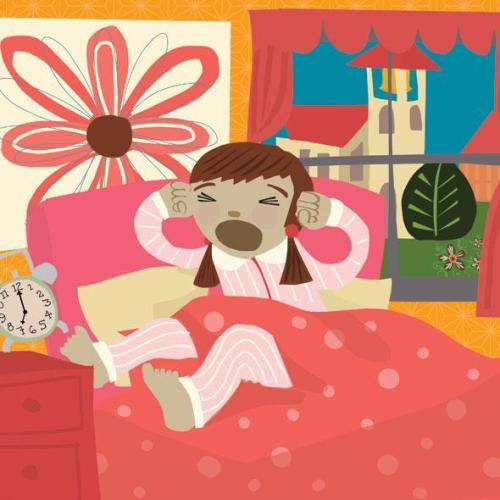
When and how did that happen?
They found me on a portfolio site, practically the day I finished my How To course with Geraldo, so I was pretty glad I’d taken the course. It was called “Splish-Splash” and had 4 illustrators illustrating about 4 pages each, so it was the perfect job to start with.
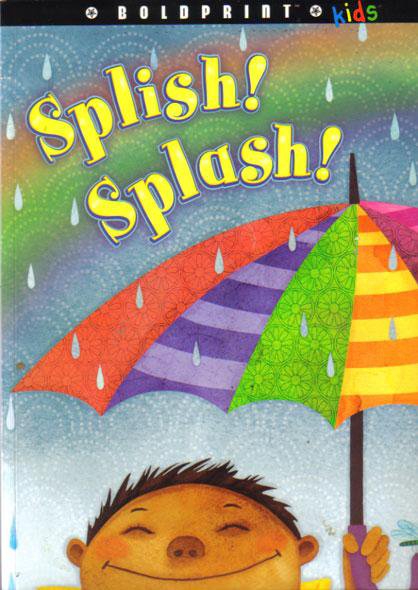
Of the picture books that you have published, which one is your favorite?
It may be because it was the most recent one I illustrated and so am not tired of looking at it yet! I’m actually still working on it, but it’s called Nanna’s Magic Globe for Benchmark publishing. Another favourite I did recently was for Story Corner, which is a brand new company in the Uk – not a picture book but illustrated story cards, where the child lays out the cards and then tells their own story – that was a particularly fun job for me because I was allowed input in what happened in the story, and also because it involved telling the story in a non-linear fashion. (Thumbnails in paper by 53, Sketches in Vellum, final art for Story Corner)
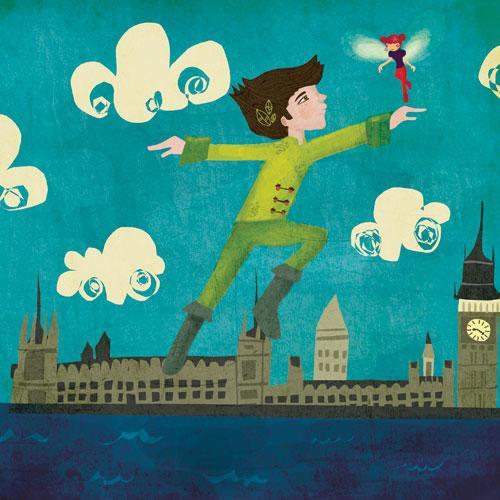
When did you decide to get involved in children’s illustrtation?
A big thing that happened was having kids of my own, and reading books to them – there are so many beautiful picture books out there! I particularly love Isabelle Arsenault and Oliver Jeffers, whose work really borders on fine art. I also am a big fan of Sophie Blackall, Peter Brown, Giselle Potter – there’s so many!

How did you connect with LadyBird Books?
This was a job through my agent – I had done a test illustration for The Secret Garden (which also happened to be one of my favourite books as a child!) and my AD thought my rendition of Dickon made a good Peter Pan, so I got to do both books.
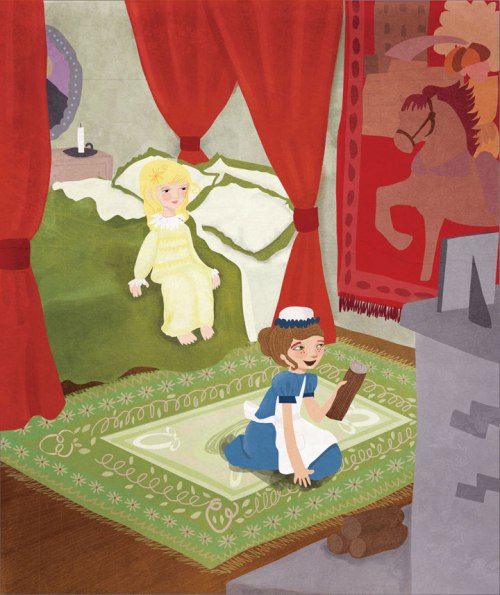
(The Secret Garden, Ladybird Books)
How did the get the contract to do My Wonderful Clothes for Korean Publisher, English Hunt?
I was approached by them, this book was slightly different than the other books I’d done in the Korean market as it was an English reader. I love working with Korean publishers as they are so invested in picturebooks!
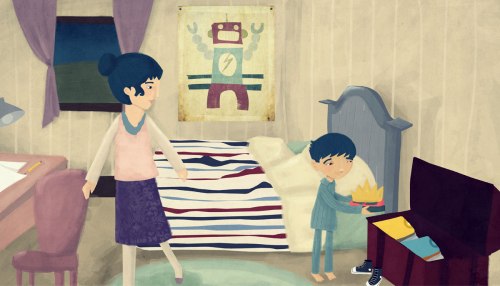
(My Wonderful Clothes, EnglishHunt)
What do you consider is your first big success?
Getting paid to draw! To be honest, it’s still an ongoing thing – I’m one of those people who can be their own worst critic, and I’m still trying to make art that impresses me as much as other illustrators work can.
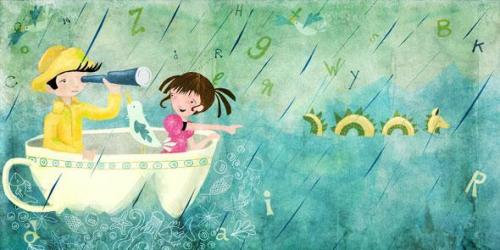
How did that come about?
Luck :)
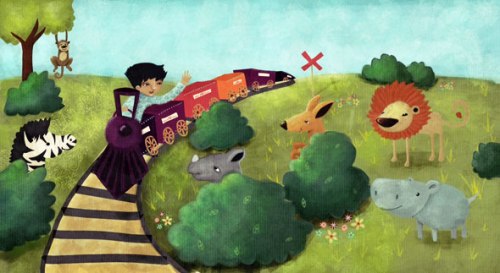
How do you promote your work to get more business?
I have a few portfolio sites that I try to keep updated regularly, and most of them have news sections which I find helpful. I also started sending out email newsletters to keep in touch with previous clients, I do one every 6-8 weeks or so. When things are slow I remind my agent I need work.
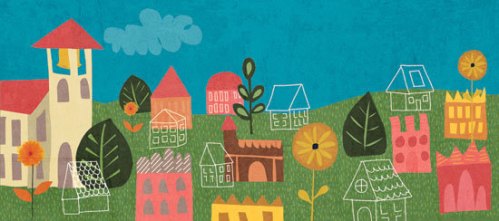
What materials do you use to paint your color illustrations?
All my work is done digitally. Originally it was done traditionally because I was never comfortable drawing with a graphics tablet, where your hand is drawing in one place and your eyes are somewhere else. In the beginning I would have loved a Cintiq but couldn’t afford one, then I got an ipad. I went from oil pastel drawings to vector illustrations, because the limitation of the iPad is the print size of your drawings. I grew to love it so much that I only occasionally think about the Cintiq still.
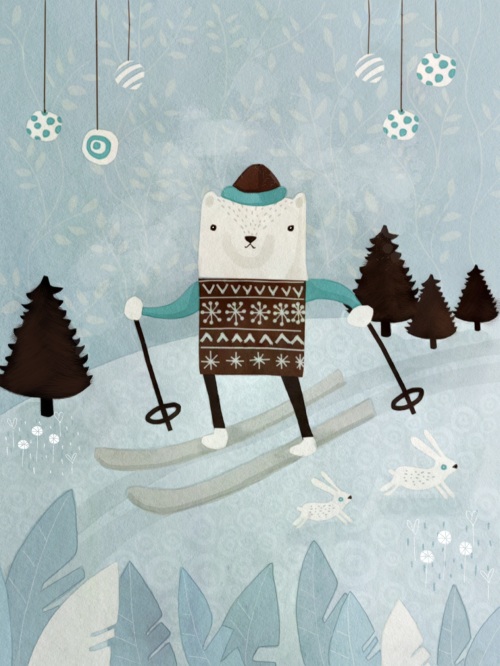
(Personal work, ipad)

Do you use do any black and white illustrations?
I have not done many, except for the comics I like to do in my spare time.
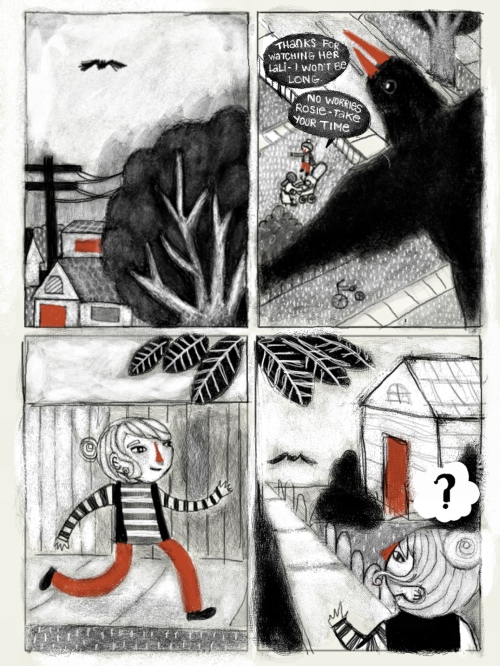
What type of paint and other materials do you use to when illustrating a picture book?
Everything is done on the iPad, even sketching. I discovered I hate the tedium of scanning! I tend to do thumbnails first, generally in Paper by 53 or a Bamboo Paper, sketches in Vellum, and color in Paintbook, which is like Adobe Illustrator except that it behaves much like a pixel based painting app, rather than making shapes. I usually export this as a pdf and then do final touch ups in Photoshop on my mac. The funny thing is that I have a bit of a love-hate relationship with digital – it certainly makes it easier to make amendments and clients love layered files, but I just love the look of traditional materials. So I’m always trying to make that aspect better. Ultimately, a good drawing and good composition is the most important thing!
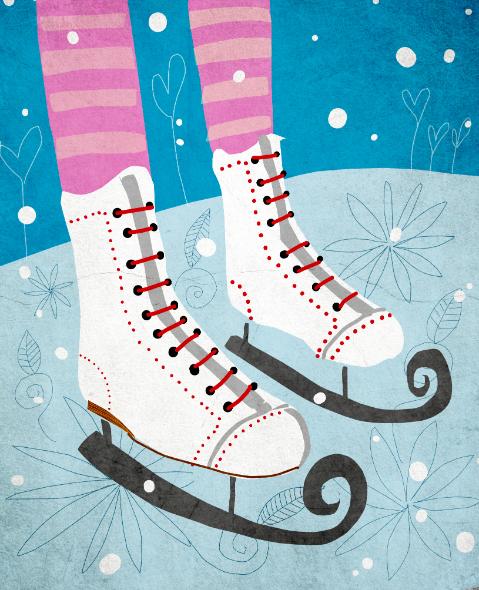
Has your style changed over the years? Materials?
I’m really hoping it’s getting better! I am always, always trying to make my work better. I’m getting in to using textures a lot lately. There’s a great ipad app called iColorama which let’s you paint your textures using masks, and then I usually do a little finishing work using Procreate, which is a great painting app but can only print up to around 10-11 inches, which makes it difficult to do spreads. I have been known to deal with single pages when the app can’t handlethe spread size and then stitch them back together in photoshop.
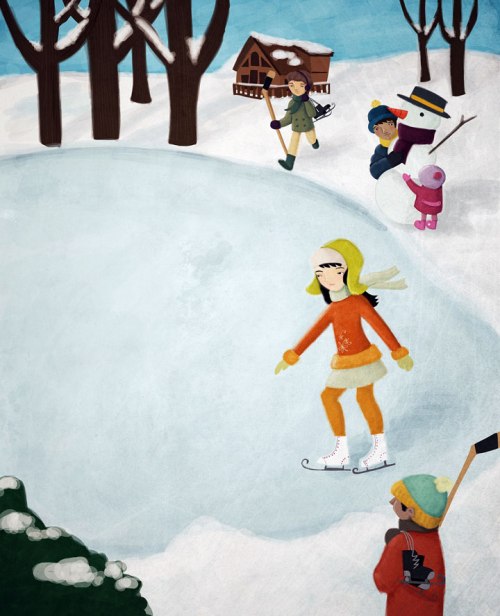
Have you done illustrations for any children’s magazines?
I have done work for Laybug and Cricket in the US.
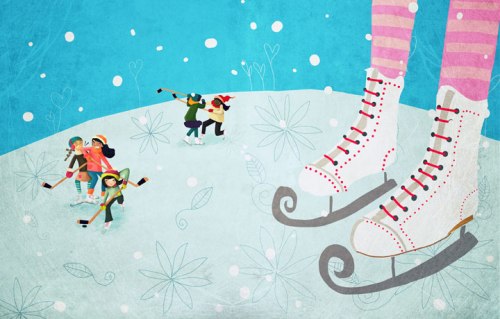
(Cricket Magazine Nov/Dec 2013 issue)
Have you done any work for educational publishers?
Tons! A lot of my work comes from Educational publishers and so for that I am grateful :)

What is the one thing in your studio that you could not live without?
Given that I work on an iPad my studio is not one specific location, but I like it best when I have my ipod and dock to listen to music or podcasts while I work.
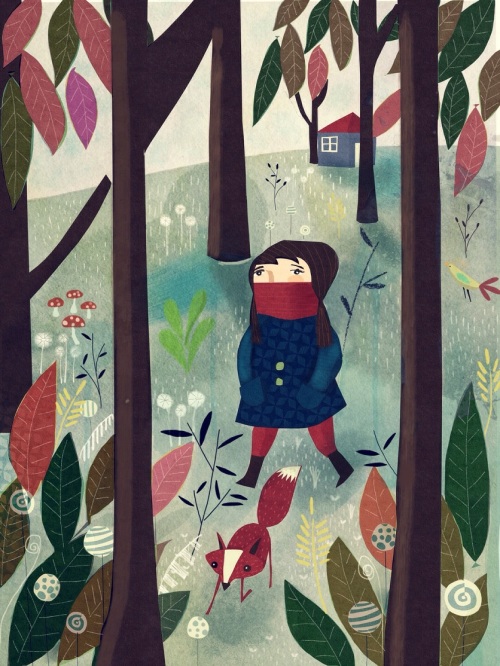
Do you try to spend a specific amount of time working on your craft?
Yes, but I don’t think of it so much as that. I love drawing, so I have my work drawing, and my hobby drawing, which is usually playing around with different apps or doing comics. Another fun aspect if doing greeting card work or licensing art is just drawing whatever you feel like and maybe someone can turn it into a card. So I’m not consciously trying to improve myself unless I’m in the middle of the job, and mostly this happens at the sketching stage – can I make this drawing better, more visually interesting? Sometimes that is constrained by deadlines, though!

(illustration of Mary Anning for http://www.coolchicksfromhistory.tumblr.com
Do you have an agent?
I work with The Bright Agency, who are based in the UK but have offices in New York also.
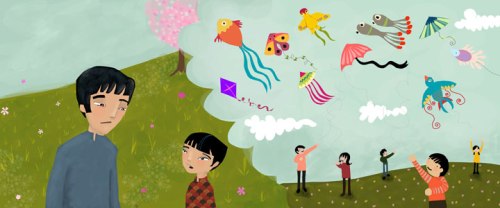
Do you take pictures or do any types of research before you start a project?
Yes, lots on internet research. I’m currently working on a book that takes place in Kenya. I’m always looking at images of how things look, their clothes, their houses, vegetation, etc. Some clients want the pictures of trees, for example, to look like actual trees you might find in the area, some don’t mind if you make everything up.
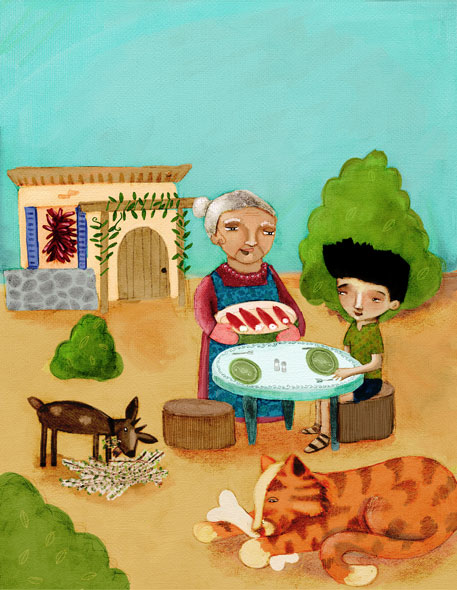
Do you think the Internet has opened doors for you?
Absolutely. If it wasn’t for the internet I would probably have to move to New York and walk around every day with a hard copy portfolio.
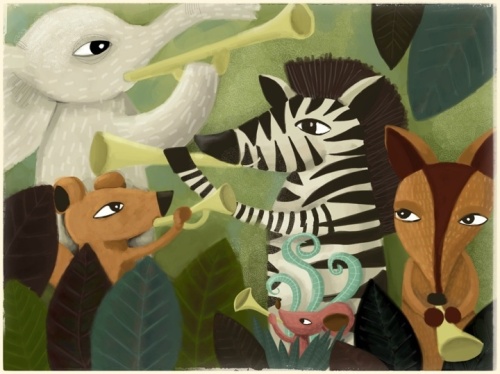
Do you use Photoshop or Corel Painter with your illustrations?
I use Photoshop along with a hundred ipad apps :)
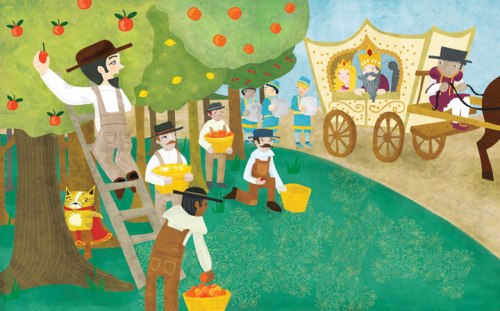
Do you own or have you used a Graphic Drawing Tablet in your illustrating?
I have an old Wacom Graphire tablet that I use for photoshop touch ups. I’ve tried all kinds of styluses for the iPad, but the ones I like the best are the microfiber tipped ones,as there is no drag whatsoever. I suffer from tendonitis, so when it gets bad I just start drawing with my finger!

Do you have any career dreams that you want to fulfill?
I’d love to do more picturebooks, and maybe write one of my own.
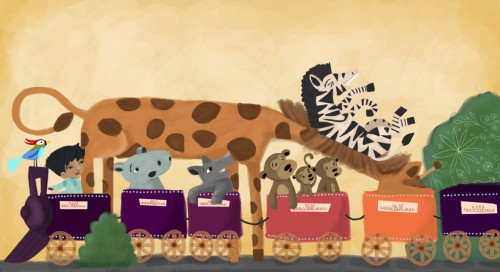
What are you working on now?
I’m currently working an interactive iPad storybook, which is my first. I’m also doing a small job for a family in the US who are doing a book as a gift for their daughter. I’m working on a second book for Benchmark while waiting for feedback on the final artwork for the first. And I have a couple more books coming up very soon with Cantata Learning, who are a new Educational publisher in the US.
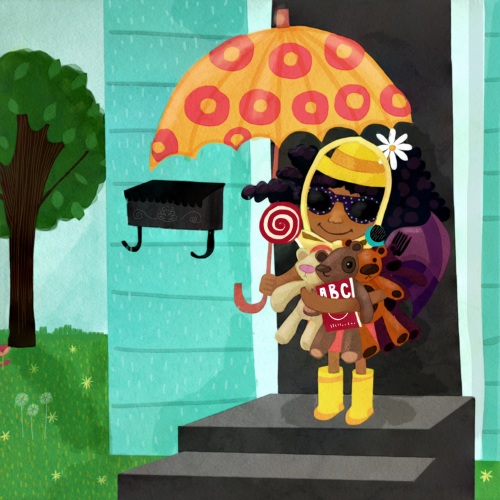
(Illustration for the Boston Family)
Do you have any material type tips you can share with us? Example: Paint or paper that you love – the best place to buy – a new product that you’ve tried – A how to tip, etc.
For traditional materials, I love Koi watercolours and Holbein Acryla Gouache. Also I’m a fan of Caran D’ache oil pastels.
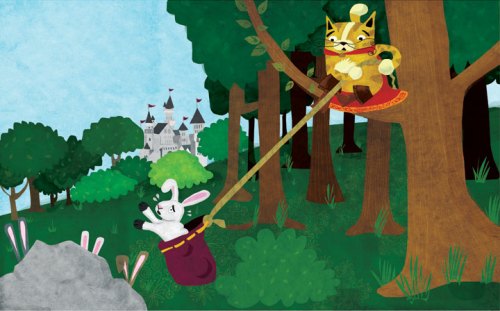
Any words of wisdom on how to become a successful writer or illustrator?
All the old stuff is true! Keep drawing as much as possible. Go to the library and find those illustrators that inspire you!
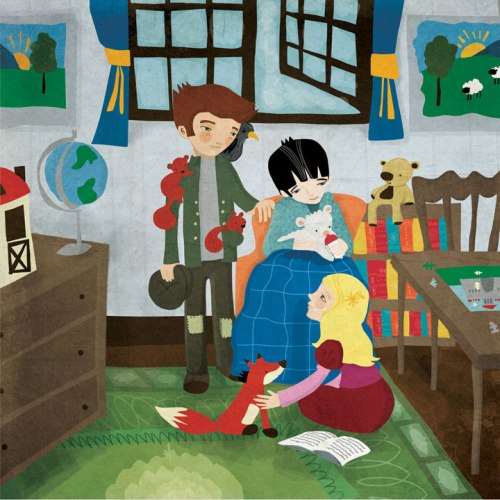
Thank you Annie for taking the time to share your process and journey with us. We look forward to hearing about all your future successes.
To see more of Annie’s illustrations visit her at:
Website: http://www.anniewilkinson.com/
facebook: https://www.facebook.com/anniewilkinsonillustration
Please take a minute to leave a comment for Annie, I know she would love to heard from you and I always appreciate it. Thanks!
Talk tomorrow,
Kathy
Filed under:
authors and illustrators,
illustrating,
Illustrator's Saturday,
inspiration,
Interview,
Process Tagged:
American Greetings,
Anne Wilkinson,
Hallmark,
Illustrator Saturday,
Simon & Schuster 


By: Kathy Temean,
on 7/25/2014
Blog:
Writing and Illustrating
(
Login to Add to MyJacketFlap)
JacketFlap tags:
Interview,
Process,
illustrating,
authors and illustrators,
How to,
Rutgers University,
demystify,
Illustrator Saturday,
Illustrator's Saturday,
Colleen Kosinski,
Moore College of Art,
Add a tag
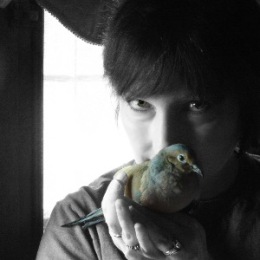 Colleen Rowan Kosinski has always been involved in creative projects. She is an alumna of Moore College of Art and graduated from Rutgers University with a BA in Visual Arts. While in college, Colleen worked with The Robert Wood Johnson Hospital as part of her curriculum. She developed, designed and constructed step-by-step instruction booklets to be used by nursing staff. After graduation, Colleen worked as a jewelry designer. While working as a designer she won a scholarship to the Gemological Institute of America and earned a certificate in Colored Stones. Colleen, having a great interest in science, volunteered at the Academy of Natural Sciences in Philadelphia, PA. She worked with Dr. John Gelhaus in the entomology department rendering illustrations of insects for scientific publications. She also worked at the Franklin Institute in Philadelphia, PA, were she designed illustrations for a cookbook featuring Ben Franklin’s favorite dishes.
Colleen Rowan Kosinski has always been involved in creative projects. She is an alumna of Moore College of Art and graduated from Rutgers University with a BA in Visual Arts. While in college, Colleen worked with The Robert Wood Johnson Hospital as part of her curriculum. She developed, designed and constructed step-by-step instruction booklets to be used by nursing staff. After graduation, Colleen worked as a jewelry designer. While working as a designer she won a scholarship to the Gemological Institute of America and earned a certificate in Colored Stones. Colleen, having a great interest in science, volunteered at the Academy of Natural Sciences in Philadelphia, PA. She worked with Dr. John Gelhaus in the entomology department rendering illustrations of insects for scientific publications. She also worked at the Franklin Institute in Philadelphia, PA, were she designed illustrations for a cookbook featuring Ben Franklin’s favorite dishes.
After the birth of her first child, Colleen opened her studio and virtual gallery. She has been working as a visual artist, with clients all over the United States, for the past eighteen years. You can visit her site at http://www.myartsite.com. She specializes in pet portraiture and still life. Her mediums of choice are oil or pastel.
Colleen resides in Cherry Hill, NJ with her husband, three sons, doberman pinscher, rottweiler, and miniature dachshund and volunteers at the local animal shelter. During the summer you can usually find her nursing a sick squirrel or robin back to health.
Here is Colleen explaining her process:
This painting example was created for the NJSCBWI 2014 Conference. I knew I wanted a dreamy, fairytale-ish feel. I wanted the viewer to wonder what would happen next. I also wanted to include the theme of the Jersey shore.
First I researched elements I needed for this particular piece of work, ex. I needed to research old-fashioned bathing suit attire, seagulls, and Victorian style homes in Cape May for this piece.
Next, I drew (in pencil) each element that was to be included in the artwork. I scanned in the early sketches and placed everything in the space to see if worked. I’d drawn a lifeguard chair and the Cape May lifeguard boat but they didn’t fit in the composition, so they were cut.
Then, I went back and shadowed each drawing in pencil.
I scanned each shadowed piece into the computer and placed them on the page.
All the shadowed pieces were built as their own layers. I then painted in colors, using varying opacities and brushes.
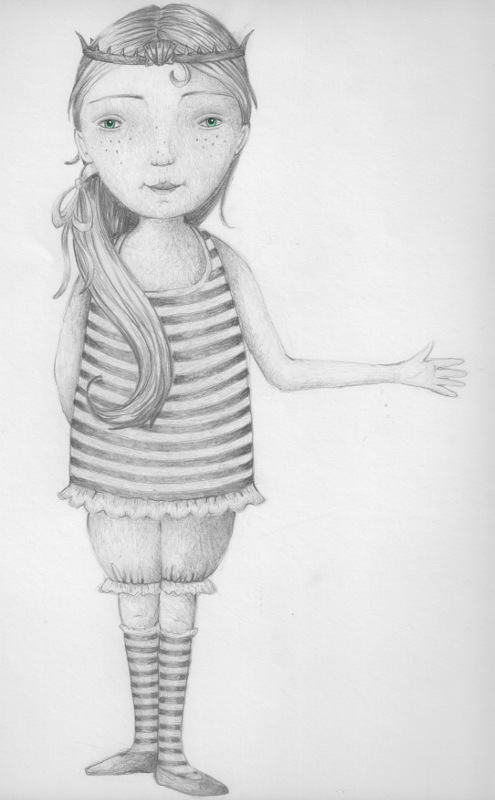 Original pencil sketch
Original pencil sketch
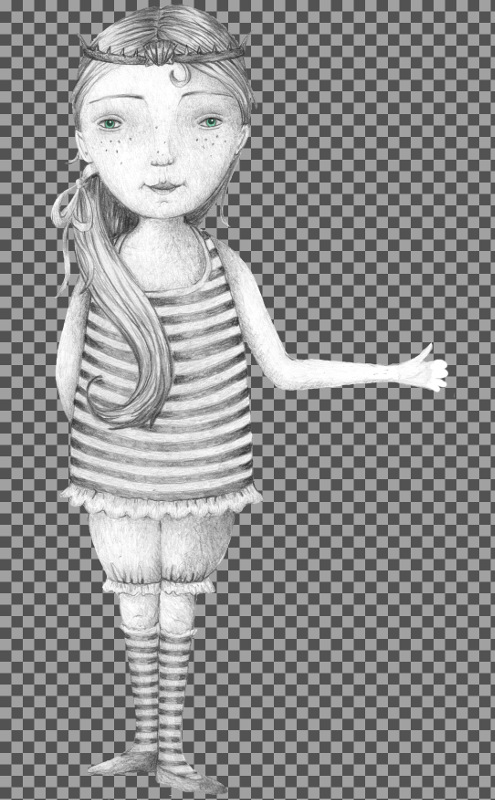
Scanned image, cut out, cleaned up and contrast adjusted.
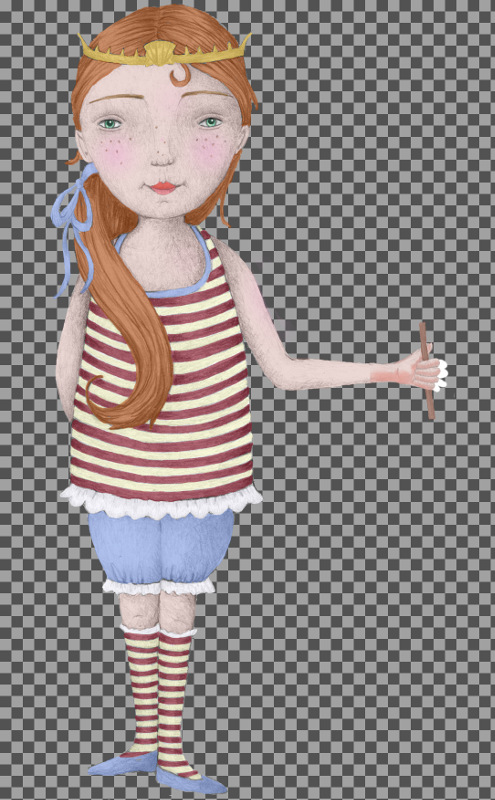
Colored layers built up.
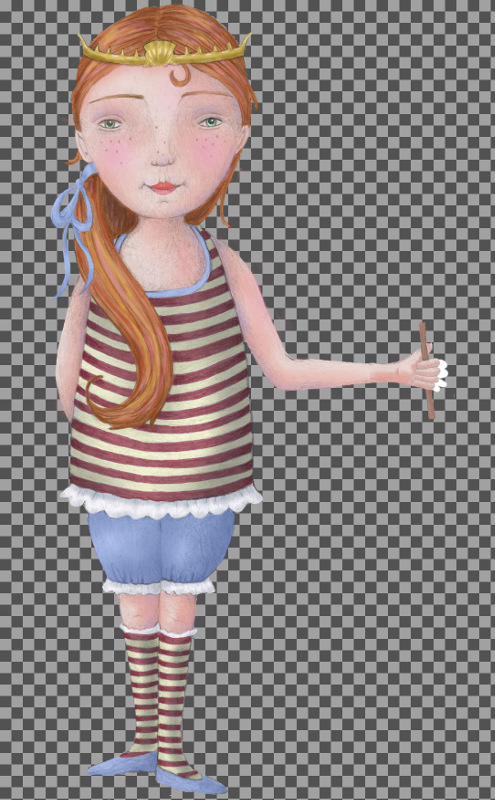
Shadows and highlights are added last.
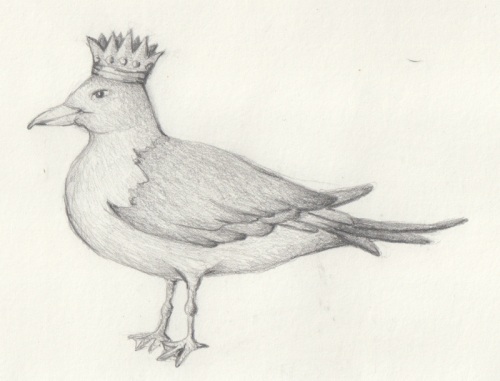
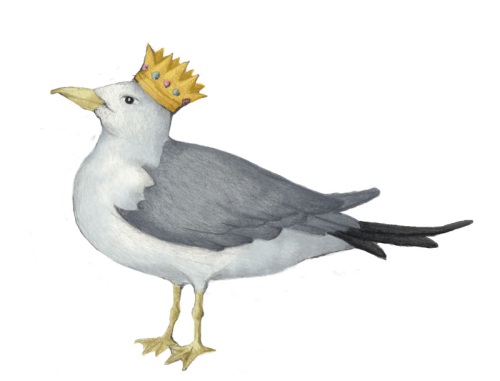 I brought the colored drawings back into the original composition.
I brought the colored drawings back into the original composition.
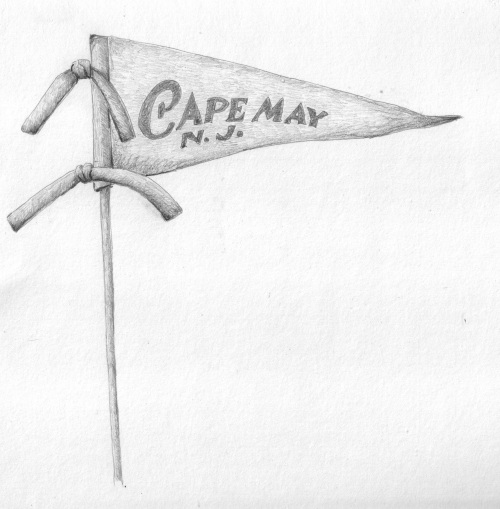
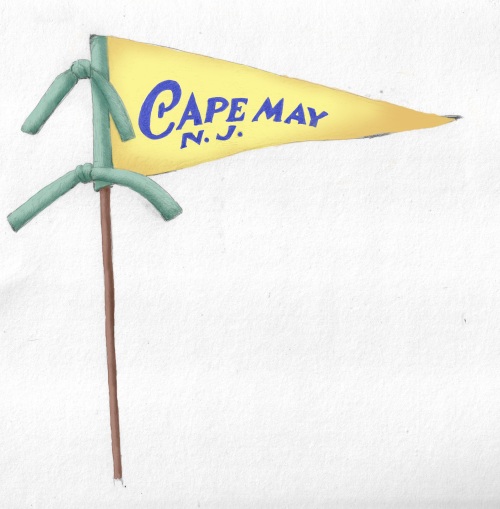 I adjusted scale and brightness.
I adjusted scale and brightness.
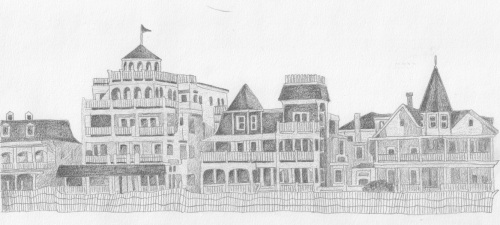
I then layer in shadows into the final composition and sometimes I add various textures into the composition.
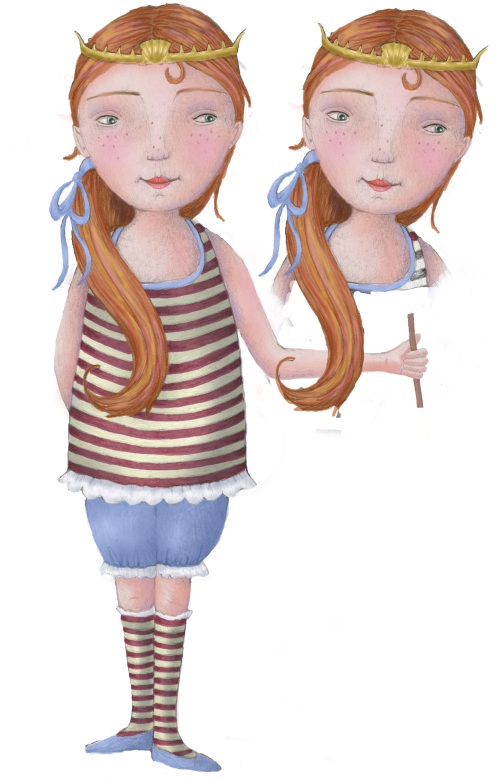
Finally, when the painting looks finished to me, I put a bump map of a watercolor texture over the entire painting. This makes the work look less “computer-like”. Copyright ©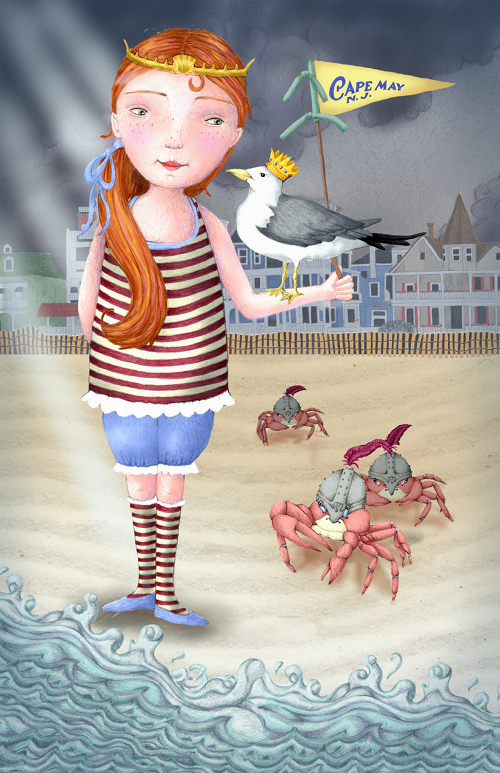
After critiques by my trusted artist friends, I add my finished piece to my portfolio. For example, they suggested her head should be tilted toward the bird so I made the adjustment as seen here.
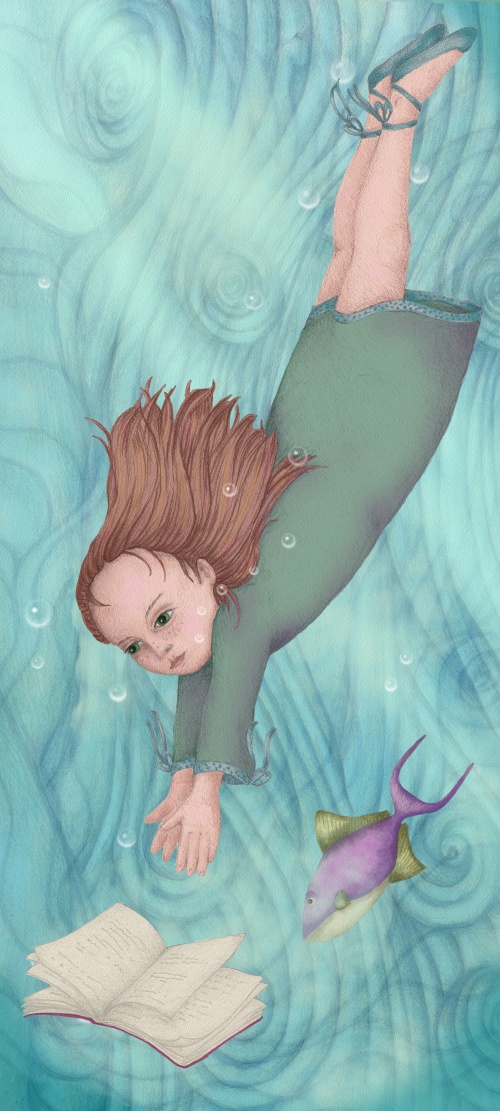
How long have you been illustrating?
I’ve been drawing forever. I participated in my first “show” when I was thirteen (and won first place.) I’ve been seriously working on illustrating for children for the past three years.
What made you choose to get your degree in visual Arts at Rutgers University?
I was originally granted a full scholarship to Moore College of Art when I happened upon a portfolio day after a Saturday class at the Philadelphia College of Art. I attended my freshman year, but then transferred to Rutgers to follow my boyfriend. I know. I know. But we’ve been married now for 27 years. : )
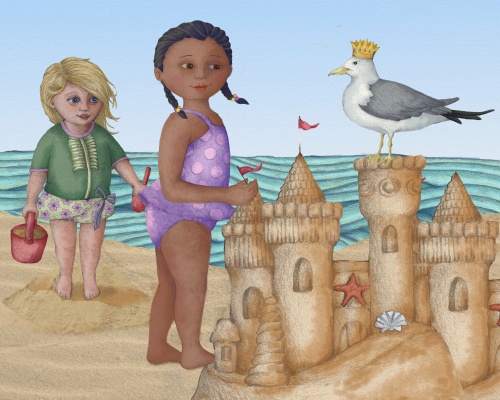
What were you favorite classes?
I loved figure drawing, creative writing, and anthropology. I’d always try to convince my professors to hold class outside on beautiful days. All except figure drawing. Naked models posing outside in the middle of campus would have been frowned upon—but would probably have drawn quite a crowd.
Did the School help you get work?
Actually, Moore College of Art helped me get my first internship as a scientific illustrator for the entomology department of the Academy of Natural Sciences in Philadelphia.
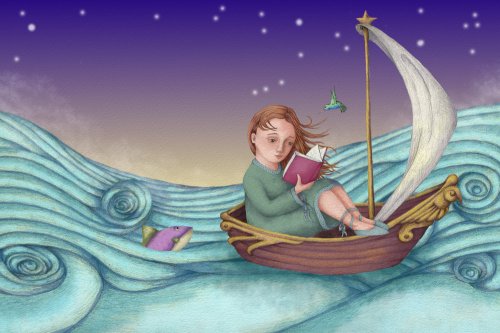
What was the first painting or illustration that you did where someone paid you for your artwork?
In high school the teachers would commission me for artwork.
What type of job did you do right after you graduated?
After college I worked in a jewelry store and did some jewelry design. I was fascinated with gemstones and won a scholarship to study colored stones with The Gemological Institute of America.
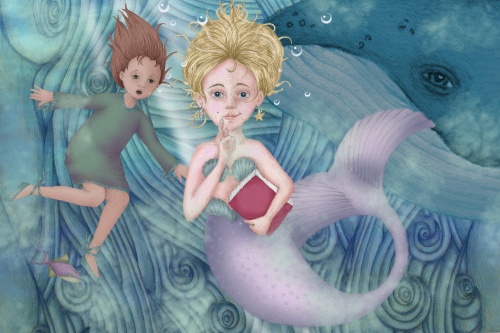 Do you think the classes you took in college influenced your style?
Do you think the classes you took in college influenced your style?
The figure drawing classes may have helped a bit but my style has organically evolved over the years.
When did you do your first illustration for children?
I started working on children’s books illustrations about three years ago.
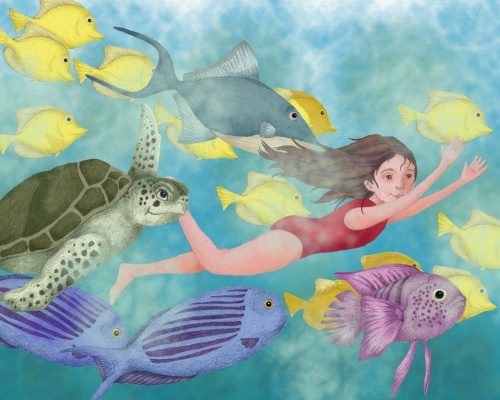
How did that come about?
I had worked as a fine artist for many years, but stopped drawing to seriously study writing. I’ve written screenplays, YA novels, and MG novels, along with picture books. NJSCBWI was holding their first illustrators showcase three years ago and I decided to participate and developed a character, which then became a story.
When did you decide you wanted to illustrate books?
After all the positive feedback at the NJSCBWI conference.
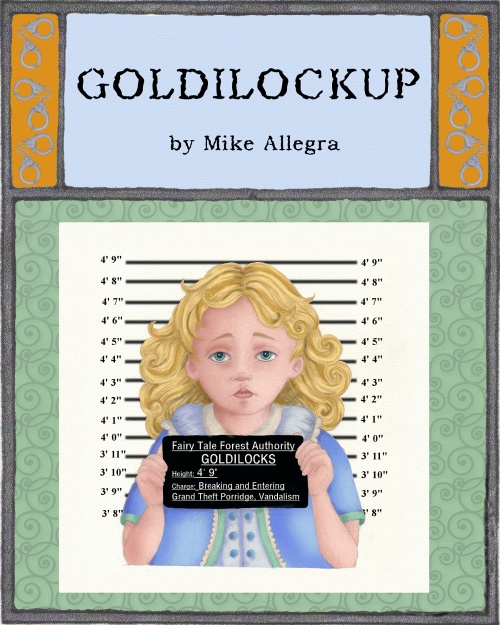
How did you get interested in writing novels and when did that happen?
I had a friend who worked in the SAG office in Philadelphia. I had an idea for a movie and asked her how I could try to sell my idea. She told me I’d need to write a screenplay. I bought books on the mechanics of writing screenplays and started networking with other screenwriters. I decided to try to convert one of my screenplays into a novel. Then I wrote bad novel after not as bad novel until I finally had one that I thought was good enough to submit. But it really wasn’t. So I kept writing more and more. I think my eighth book was the charm and is now being read by several editors.
Are you open to illustrating a picture book for a writer who would like to self-publish?
I think I’d rather work on my own books or be paired with an author from a traditional publisher.
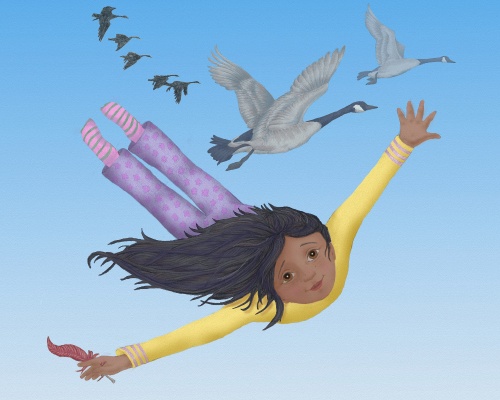
Have you worked on illustrating a book dummy to help market your illustrating skills?
Yes.
Since you already are writing novels, have you thought about writing and illustrating you own picture book?
I’ve written quite a few PBs and I have one finished dummy and one in process.
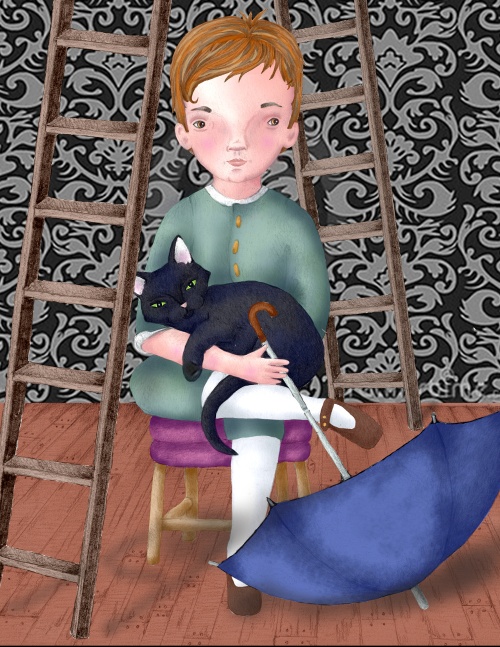
Do you have an artist rep.? If not, would you like to have one?
I’m presently not represented, but would love to work with an agent interested in an author/illustrator. I’m a hard worker and not afraid of revisions.
What types of things do you do to market your work?
I show at conferences, tweet, network on FB, display my work on the SCBWI illustrator showcase, and I have a website—ColleenRowanKosinski.com
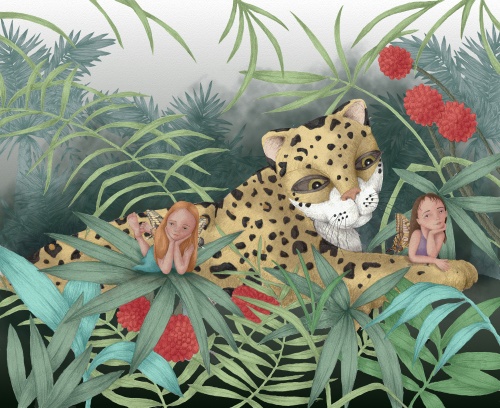 What is your favorite medium to use?
What is your favorite medium to use?
I’m currently working with a combination of pencil sketching and digital painting. I also love oils, and soft pastel.
Has that changed over time?
Many years ago I worked primarily in pen and ink and watercolor. I did a lot of hand-numbing stippling with a rapidograph pen. I transitioned to pastel. Sold quite a few, then fell in love with oil painting. Oil painting is a long process because of the practice of building layers of colors and the drying times involved. That’s why I love digital so much now. I approach color the same way I did in my oil painting but have zero drying time!
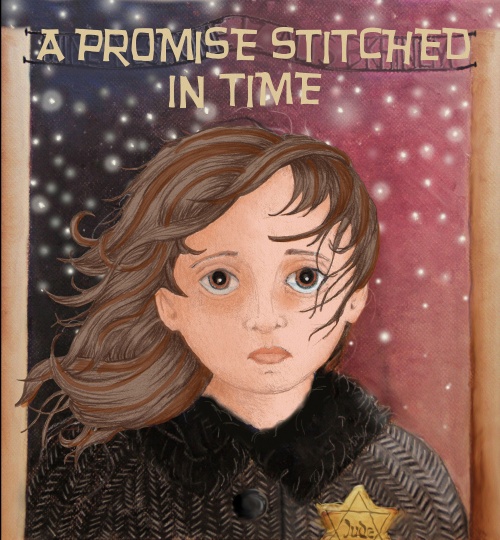
Do you have a studio in your house?
I don’t have a designated studio. Because of very bad back issues I have trouble sitting for long periods of time in a regular chair, but I’ve found a recliner takes the stress off of my lower back so you can usually find my there, either writing, sketching or working digitally. I do have an office with my supplies, a desk, computer, scanner, printer and bookshelves from floor to ceiling.
What is the one thing in your studio that you could not live without?
My laptop computer.
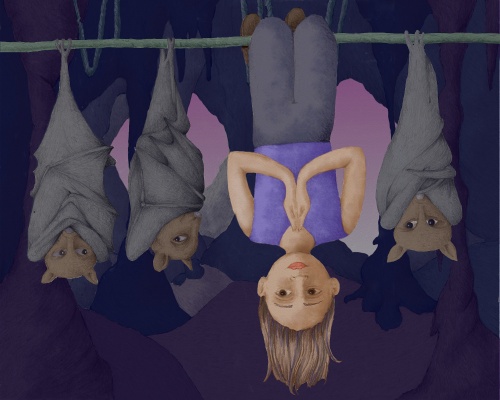
Do you try to spend a specific amount of time working on your craft?
I work every day for at least eight hours or more. I try to attend at least one SCBWI conference a year and as many other workshops that I can fit into my budget and schedule.
Do you take pictures or do any types of research before you start a project?
Yes, I take pictures and research reference images online.
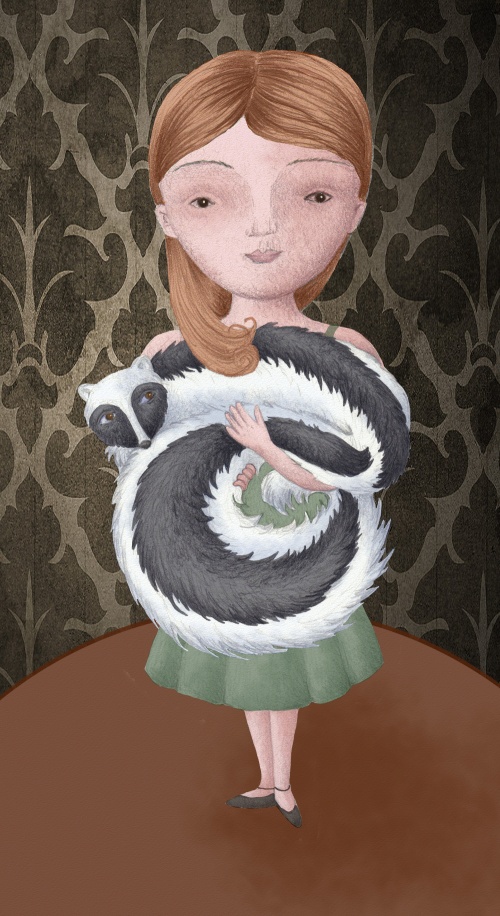
Do you think the Internet has opened doors for you?
Definitely. I used to have to find reference photos by paging through books and magazines for hours. The Internet also helps me network with other writers, illustrators, agents, and editors.
What do you feel was your biggest success?
I don’t know if I’ve experienced a “big” success yet. I just keep doing what I’m doing while constantly trying to improve.
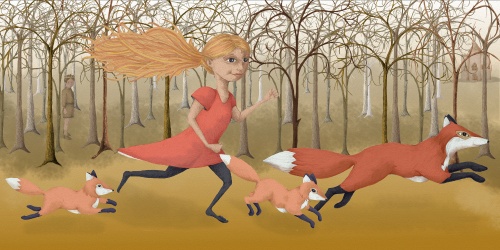 Do you use Photoshop with your illustrations?
Do you use Photoshop with your illustrations?
I actually use GIMP, which is a free version of Photoshop. I did finally bite the bullet and start subscribing to Photoshop (you can’t buy it outright anymore, you must pay a monthly fee.) I’m experimenting with it but feel more comfortable with GIMP.
Do you own or have you used a Graphic Drawing Tablet in your illustrating?
Yes, I use a Wacom pad when creating my artwork.
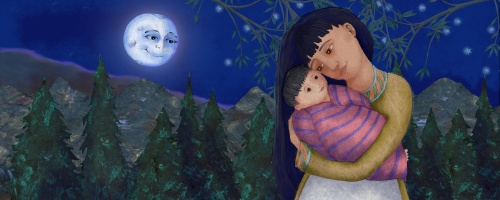
Do you have any career dreams that you want to fulfill?
I dream of finding an agent who knows the craft and market, and being traditionally published. I guess if I want to dream big, I’d love to win a Newberry or Caldecott.
What are you working on now?
I’m working on a story called Lydia Light Takes Flight. The character I created for the 2014 NJSCBWI Conference Art Competition inspired the story. The text is finished and I’m currently working on the dummy. It’s a lyrical story with a fairytale’ish feel. I also have a couple PB biographies ready to go, and two other lyrical PB texts. Editors are reading my older MG novel and I’m hoping one of them will make an offer soon.
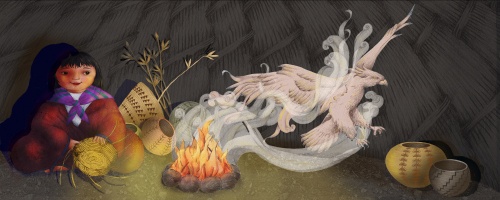
Any words of wisdom on how to become a successful writer or illustrator?
I don’t know if I can really speak to being successful, but I can say that you have to be a fighter. Don’t wallow in rejection and keep moving forward. Be open to critique and learn from it. Lastly, be involved in the kidlit scene. It’s a wonderful, supportive community.
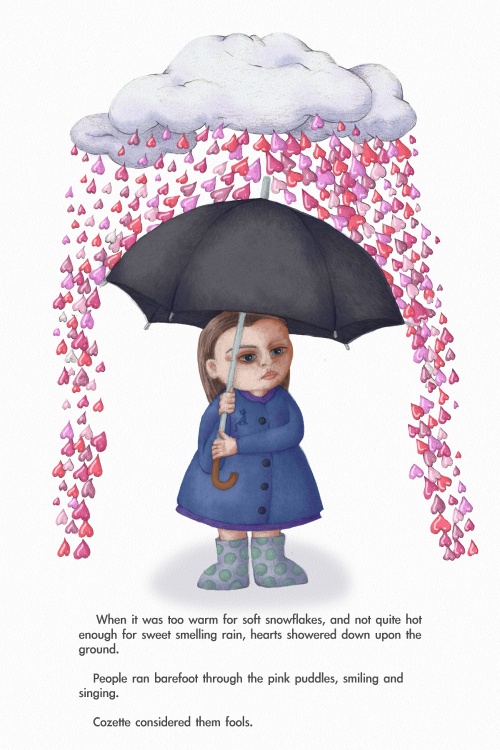
Thank you Colleen for taking the time to share your process and journey with us. We look forward to hearing about your future successes.
To see more of Colleen’s illustrations you can visit her at: www.ColleenRowanKosinski.com Twitter: @writergirlrowan
Facebook: Colleen Rowan Kosinski
Please take a minute to leave a comment for Colleen, I know she would love to heard from you and I always appreciate it. Thanks!
Talk tomorrow,
Kathy
Filed under:
authors and illustrators,
demystify,
How to,
illustrating,
Illustrator's Saturday,
Interview,
Process Tagged:
Colleen Kosinski,
Illustrator Saturday,
Moore College of Art,
Rutgers University 


By: Kathy Temean,
on 9/27/2013
Blog:
Writing and Illustrating
(
Login to Add to MyJacketFlap)
JacketFlap tags:
Interview,
inspiration,
Advice,
Process,
authors and illustrators,
Illustrator Saturday,
Illustrator's Saturday,
Jade Fang,
The Twewlve Days of Christmas,
Add a tag

Jade Fang started doodling at a very young age and has developed great interest in drawing and painting as a child. She has been working as an illustrator since 2010 and has worked with several publishers on children’s book projects. Books that she has illustrated include The Twelve Days of Christmas, published by Accord Publishing, Journey to the West, published by Compass publishing, The Purple Paw Prints and its sequel, Paw Prints on the Magic Sofa, written by author, Sarah Mounsey, and were published by Brindal Books.
She now lives in Singapore, spending most of her time making colourful and whimsical illustrations. When she is free, she will continue to spend her peaceful days doodling.
Here is Jade discussing her process:

Rough Sketch

Finished sketch

Scanned into computer and digital color added.

Final version with painted in details

1. How long have you been illustrating?
I start illustrating work a year after I graduated, probably for about three to four years now.

What was the first thing you did where someone paid you for your artwork?
My first commissioned work actually came from a friend’s friend who wanted to self publish a children’s book. I was definitely very excited about the project but because I was still trying to develop a better portfolio at that time, I was more nervous than wanted to celebrate the event.
 n
n

I see that you received a Bachelor and Master of Fine Arts degree in Illustration from Academy of Art University, San Francisco. Since you lived in Malaysia, how did you end up going there?
Initially it was just a dream that I had after high school of doing an oversea study and explored the other side of the world. I did some research about schools, AAU website, to me, at that time was very user friendly and the school corresponded very well with me so I was more or less decided to the enrollment. Another deciding factor was definitely the city itself. San Francisco is probably one of the few cities in US that I have known or heard of from news or TV shows at that time but it fascinates me.

What types of things did you study?
I was there to major in animation initially but switched to illustration after year realizing that it was not as simple as watching a Saturday morning cartoons. I took most of foundation drawing and painting classes that teaches techniques and mediums, I also took illustration classes like children’s book illustration, narrative illustration etc. Later years during my master program study, I took more fine arts painting classes to be better at it.
 n
n

What classes were your favorites?
It would be Quick Studies taught by Craig Nelson. I actually took the class twice but the second time was taught by another great Fine Art instructor Tomutsu Takishima. I love the class because you get to painting a lot of different subjects, from people to still live, landscape and cityscape as well. The objective is to learn to paint fast effectively without the burden of trying get perfectly finished painting every single time, like Craig said to the class once, “it’s a great way to build an artist’s painting mileage.” I did get a lot of quick studies paintings done from that class and it was really good. Now when I look back at these paintings, I can remember the time that I took the pictures, the people, places and events that I came across at that time, it’s almost like a collection of diary inputs in painting form.

Are you still in the US?
No, I’m current staying and working from Singapore.

Did AAU help you get work?
The school has its own student career service department to help students with getting work and promoting themselves. I wasn’t as initiative as I should be with the service but one my friends got a job offered through a post on the department site just three days after she graduated.

What influenced your style?
I like a lot of artists’ work but the illustrators that I would always refer back and look at their work are Norman Rockwell, P.J Lynch and Charles Santore. Their works are always well constructed and very descriptive, the characters they created for the story are always engaging and animated, on top of that, they completed the work with their mastery painting skill. As a new illustrator, I know it is not easy to achieve that as it requires the artist’s acute observation from daily life, tons of good references, and the time and efforts to sit down and construct a piece that really works. I admired their capabilities, they inspired me a lot and I guess one way or another they influence me in my work as well.

When did you decide you wanted to illustrate a children’s book? What influenced going in that direction?
I think somehow I prefer to do work that is more innocence, happy and less violence, and Saturday morning cartoon, which in a way is very similar to a children’s book, is what attracted me in the first place. So through the projects that I did in Children’s book classes during my study, I grew more and more interested in it and continue to do it as my thesis project during my master program. Another reason is that once I get to know about children’s book and all the great children’s book illustrators better, I come to realize that children’s book not as simple as it seems, it actually comes with a challenge to want to create something good and leave an impact to the young readers. I think this aspect interests and excites me to want explore more about children’s book illustration.

Have you done any work for children’s magazines?
Not really, I had a chance to do a spread for a poem for Ladybug Magazine once and not anymore after that, ha.

Do you have an artist rep? How did you find each other?
Yes, I am currently represented by WendyLynn & Co. I started out like all newly graduated illustrators, I did my research to get names and contacts and then I would send query letters along with a promotional postcards or brochures to publishers and art representatives who would be interested in my work. Wendy replied to my query and offered represent me.

How many children’s books have you published?
I have done nine books so far, including those that I did for self published authors.

What is the story behind getting the contract for The Twelve Days of Christmas with Accord Publishing?
It was through my agent. I think the publisher was looking for someone who was able to illustrate the book within a limited time frame. As I haven’t done any real fully illustrated 24 pages of children’s book before at that time and when the publisher ask for portfolio samples for review, I sent over a dummy book that I did base on a children’s story when I was developing my portfolio, as a side project for myself. Fortunately, publisher thought it was ok and that was how I got to work on the book.

How did you get the contract to illustrate Journey to the West, published by Compass publishing?
It was through my agent as well.

Is Compass Publishing an educational publisher? Can you tell us a little bit about them?
Actually not much I can tell you about them except yes, they are educational publisher, beside two stories that I illustrated from them, I also did a couple pages of artworks for their workbook as well.

Which book was your first?
I did a series of illustrations for a self published author before I got to work on The Twelve Days of Christmas with Accord Publishing. Both the author and I were very inexperience about book publishing at that time and so I would consider The Twelve Days of Christmas to be my first book published by major publisher.

What types of things do you do to find illustration work?
I actually don’t promote myself and my work actively but I try to at least maintain my website and also attend events that are related to children’s book publishing or illustration. A website is helpful when people want to check out your work and portfolio instantly. A blog is good too but I am not discipline enough to commit to that. As for attending events, it’s good for keeping up to date with current trends related to our field and also to get to know people in the industry as well as letting people to know about ourselves (and our work) as well. I am also a member of SCBWI and that how Sarah contacted me because we are both members of the society in Singapore. Some of the works that I got were through word of the mouth and some were gotten through my agent.

I notice that you have listed doing work for Atheneum Books for Young Readers. What did you do for them and how did they see your work?
Hmm…actually I’m not sure if I did any for Atheneum Books for Young Readers before, probably a mistake that I made about the information. Did I mention it on my website or on ci.com?

Are you open to illustrating for self-published authors?
Sure, actually four out of the nine books that I have done so far were commissioned by self published authors. More and more authors are doing self publishing as it seems really easy to do that nowadays. The fee for the commission is usually not as good as what a publisher could offer but I appreciate the opportunity to get involve and illustrate a good children’s story. Two books (Purple Paw prints and its sequel, Paw Prints on the Magic Sofa) that I illustrated for Author, Sarah Mounsey are good examples. Sarah wrote the story, I did the illustrations, she published them and did wonderful book launch for each of them, she also continues to promote the book at schools and places. Both books did very well but I think mainly because it has good story to start with.

What is your favorite medium to use?
I used to paint a lot with acrylic when I was in school but now, due to conveniency, my medium of choice is watercolor. The clean up is easier.


Do you take pictures or do any research before you start a project?
Yes, not so much with taking picture but research references from the web is usually part of the working process. Knowing the subject matter that you are working on is really important. Even though I am not a realistic painter, good references will help me to turn something that’s made up more believable.


Do you think the Internet has opened doors for you?
Yes, all the social media that we have now makes it easy for us to promote our work to the public. Artists are selling prints online and authors are self publishing, I think internet definitely opens up more channels for us to do establish ourselves.


Do you use Photoshop with your illustrations?
Yes, definitely but mostly for the sketching and editing of the sketches. I still prefer to paint my illustration work traditionally but Photoshop saves me a lot of time in constructing the layout.
 n
n

Do you own or have you ever tried a graphic Drawing Tablet?
Yes, I do all my sketch in computer with Wacom tablet.
 n
n

Do you think your style has changed over the years? Have your material changed?
Not really, I think. I use watercolor but am trying to find time to try out other material for my own work.
 n
n

Do you have any career dreams that you want to fulfill?
I am actually thinking of doing a series of my own work for exhibition. Hopefully I am able to do it next year and if it works out well, I will try to do it annually or every two years. I think this part of my wish to want to get my hands into creating my own content some day in the future.
 n
n

What are you working on now?
I am actually finishing a children’s book illustration project now and will be starting another after that. Both stories are animals oriented so I have been drawing a lot of animals recently.
 n
n

Do you have any material type tips you can share with us? Example: Paint or paper that you love – the best place to buy – a new product that you’ve tried – A how to tip, etc.
I use what my instructor in AAU recommended, Winsor Newton watercolor paint with Arches cold press paper.
 n
n

Any words of wisdom on how to become a successful writer or illustrator?
I don’t think I am a successful illustrator yet but I think passion and perseverance will definitely help one to achieve that. Good luck!

Jade thank you for sharing your work with us. Please keep us up to date with your journey. Her is Jade’s website link: www.jadeartz.com/
Hope you will take a minute to leave Jade a comment. Thanks!
Talk tomorrow,
Kathy
Filed under:
Advice,
authors and illustrators,
Illustrator's Saturday,
inspiration,
Interview,
Process Tagged:
Illustrator Saturday,
Jade Fang,
The Twewlve Days of Christmas 


By: Kathy Temean,
on 6/7/2013
Blog:
Writing and Illustrating
(
Login to Add to MyJacketFlap)
JacketFlap tags:
Montery Bay Aquarium,
Artist,
Interview,
inspiration,
Process,
scientist,
authors and illustrators,
Kirsten Carlson,
Illustrator Saturday,
Illustrator's Saturday,
Add a tag
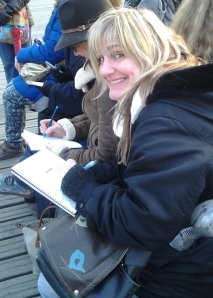 Kirsten’s career combines what she loves best about science, art & design. She is dedicated to creating illustrations, graphics, logos and stories that inspire connections between people & nature.
Kirsten’s career combines what she loves best about science, art & design. She is dedicated to creating illustrations, graphics, logos and stories that inspire connections between people & nature.
After volunteering and working for over 10 years with Monterey Bay Aquarium, Kirsten now works out of her own studio. She is a children’s book illustrator & writer, as well as a visual science communications consultant. Kirsten collaborates on projects with scientists, educators, educational institutions, private companies and publishers to tell people stories about nature and science.
Kirsten illustrations style ranges from whimsical watercolor paintings to scientifically accurate pen & ink illustrations. The project’s audience dictates the style and medium. Her illustration work appears in scientific journals, greeting cards, posters, books, aquariums and brochures. Her design communication projects include logos, print and online collateral.
Kirsten brings her enthusiasm and skills as artist, scientist, and designer to every project she works on. She finds inspiration in nature and knowledge and strives to communicate that in her work.
Kirsten is the SCBWI Regional Advisor in Germany+Austria. She started out on AdCom in WA for 2 years (designing newsletter and conferece materials and the traveling booth use at different events in the USA like ALA). After she moved to Germany, she took over as Illustrator Coordinator for 1.5 yrs before taking over the RA position there. She just became an SCBWI board member and the International Illustrator Coordinator last fall, but has to retire when her family moves to hawaii (IIC must live on international soil).
She and her husband Dave, along with their two cats and two dogs, currently live near the Black Forest in Southern Germany.
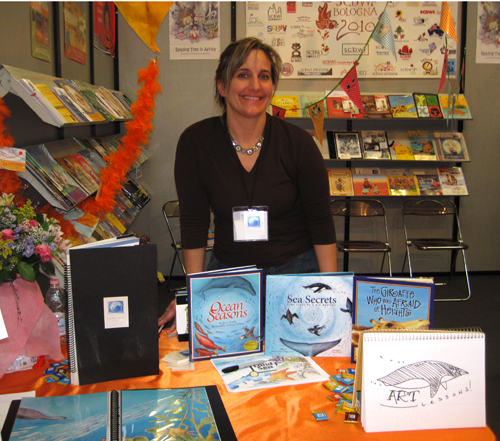
Here is Kirsten:
I worked directly with the author, Joni Sensel, to create the design for the cover. Because it was going to be the 3rd in a series we wanted to incorporate some elements so it echoed the previous covers, I knew I wouldn’t be able to copy the illustration style of the previous covers so I suggested scratchboard because I know well from my scientific illustration work and I wanted to create in image with strong contrast.
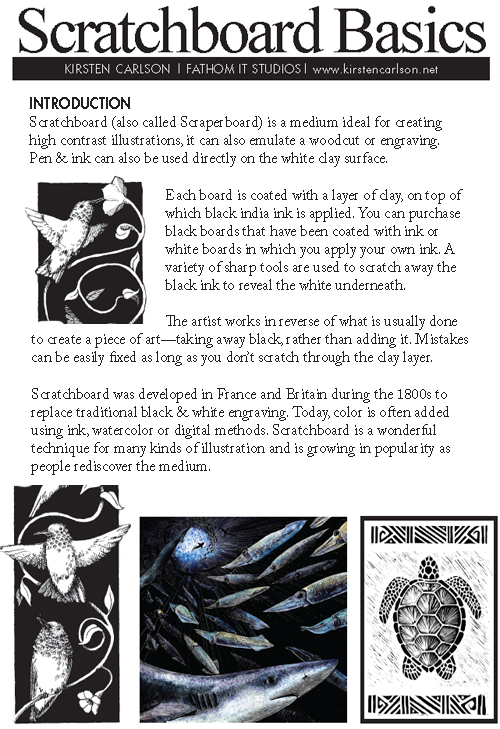
Special tools needed to do scratchboard:
- clay-coated board
- scratching tool(s)
- permanent ink (ie. india ink)
- permanent ink pens (for adding lines)
The clay-coated board is available in white and black (black means it is already coated with ink). I prefer to apply my own ink because I don’t want to spend a lot of time scratching away ‘white’ areas, I’d rather leave them white from the beginning.
I learned on Essdee Scraperboard (from the UK:
www.essdee.co ) but I now prefer Ampersand (
www.ampersandart.com) because they put the clay coating on masonite and it’s better protected from cracking. If you use Essdee, you just have to make sure that you put it on a backer board.
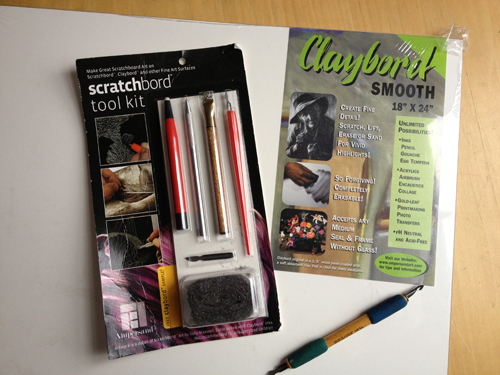
You can use just about any sharp tool to scratch the clay surface, it just need to be sharp or you get a ‘fuzzy’ line on the clay. I go through a lot of blades on an illustration, and change them often. My favorite tools are an X-Acto blade #16 and a Scratch-Art flat blade and a Speedball Round Knife. But they make a ton of different types of scratch-tools.
Here are some places you can find the supplies:

I did some very loose thumbnails and we quickly chose three compositions that I sketched in more detail. We ended up combining two of the sketches into one composition, and I did a preliminary sketch.
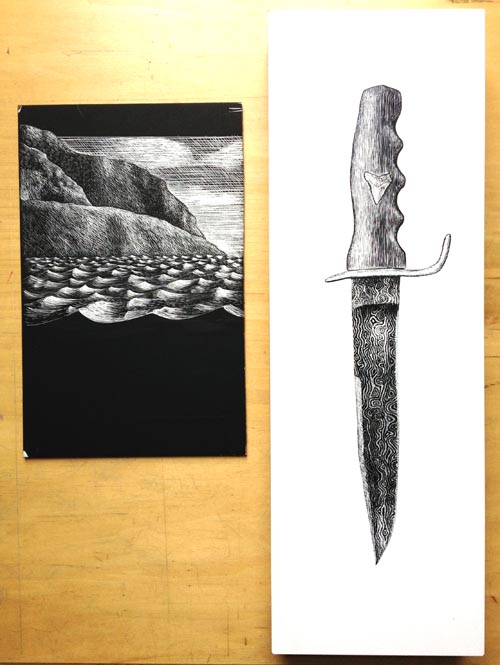
I kept the background, people and knife elements separately.

My assistant (aka husband) made a knife specifically for me based partly on Joni’s description of the knife in the story. Then all I had to do, was draw it from the real-thing.
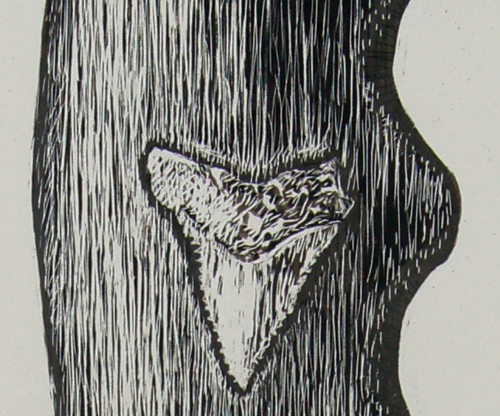
I uploaded a video showing the process but it didn’t turn out well (learning curve. newbie mistake stuff) but maybe it will help visualize the following. https://vimeo.com/67728895
steps:
1.transfer art to clay-coated board (usually using Saral graphite paper in blue)
2.ink the areas that will be ‘mostly’ black
3.wait for it to dry (blow dryer speeds up the process)
4.scratch and blow off the dust (it is better to use a brush to wipe the scraped powder into a pile, but I either blow or tap the art on the table)
5.the more you scratch the better it gets. I am a messy-scratcher, some ppl are very precise.
6.repairing problem spots is easy—scrape away excess ink or add ink with pens or brush.
7.two tips: make sure you let the ink dry completely before scraping, if the clay is damp from the ink you won’t get a nice clear line; it’s better to apply ink to thinly and have to do multiple layers than add it too thick and get a thick-spot on the illustration (if you buy pre-inked clay board you skip this problem)
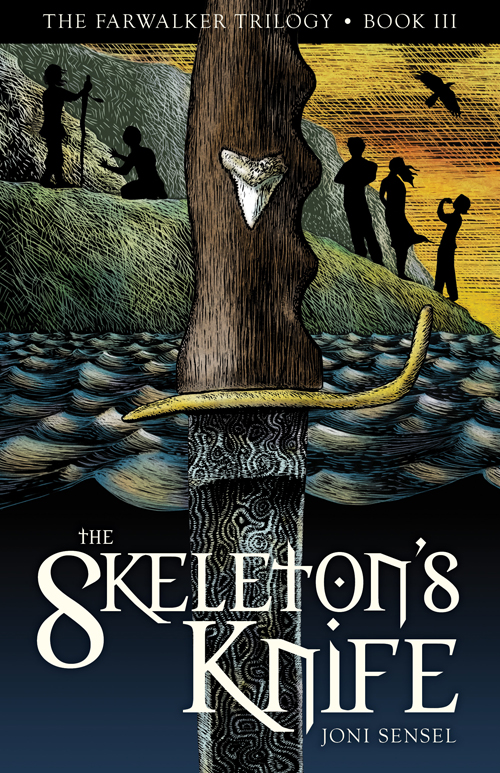
The final cover is a Black and white illustration in scratchboard with digital color, using the same font as the first book (and edition) in the series.
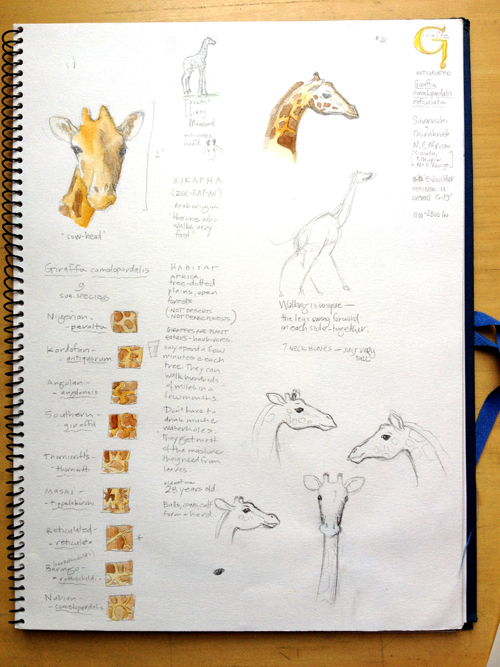
The Giraffe Who was Afraid of Heights was done by hand in watercolor and gouache.
After I said I would illustrate the story, I filled up a sketch book researching Africa, giraffes, monkeys, hippos and crocodiles. My file folder is full of stuff, even after several purges of material. I even went to a zoo where I could hide in a special blind to observe giraffes and I went to a reptile zoo to study crocodiles up close.
I used gouache to paint the cover and the publisher added the background from another spread to go behind the giraffe head) and added the text and border.
I use almost exclusively Winsor & Newton with some from Daniel Smith paint. I also love Waterford papers the best, Arches smells like wet-dog to me when I start laying down washes (and I get plenty of that smell with my real-life wet dogs). I’ve recently fallen in love with a bamboo watercolor paper from Hahnemühle. I have oodles of brushes, and go through phases where I have favorites, usually varies project by project. I seem to have a lot of DaVinci brand.
How did you end up moving to Germany. How long have you been there? Do you plan to go back to the states in the future?
I fell in love with a military man while living in Monterey, California. We arrived in Germany five years ago (Sept 08) for his job and were supposed to stay in Europe until 2015. However, the military made some unexpected changes and we are moving to Hawai’i this summer. I wasn’t ready to leave but I’m super excited about being near the ocean again.
I see that you have a BS in Biology.
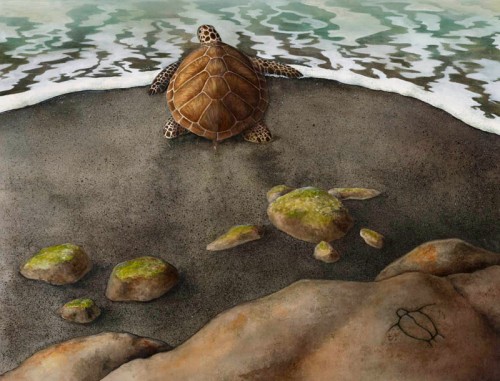
How and when did you get involved in art?
I’ve have been artistic since childhood, but I didn’t start pursuing it professionally until I was in graduate school for marine science. For two months, I spent many hours diving underwater doing research in Antarctica with icebergs, amphipods, penguins and seals. That experience changed my life forever. I was blown away by the unbelievable and unfathomable things I saw and it inspired me to reach beyond science in search of a way to communicate what I experienced to other people.
I found a graduate program that combined science and art—graduated with a Science Illustration Certificate from the University of California, Santa Cruz (the program is now located at California State University, Monterey Bay) and have been illustrating professionally ever since.
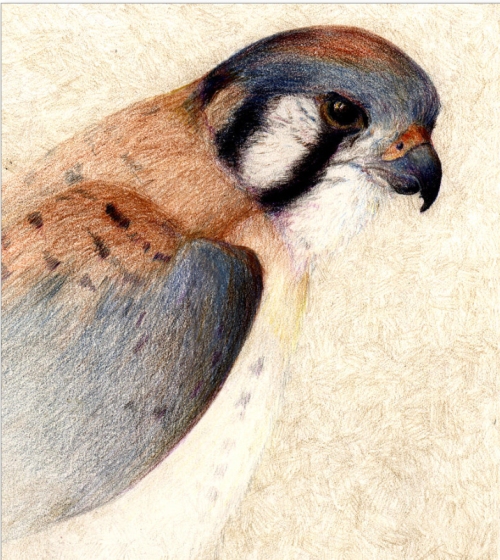
Did you ever take any art lessons?
Absolutely…and I still take art lessons whenever possible. I’m definitely addicted to learning. I took one art class as an undergraduate, but much of my illustration training is from the Science Illustration program and the amazing instructors that are still teaching there. I’ve pondered whether I should go back to school for a degree in Children’s Book illustration.
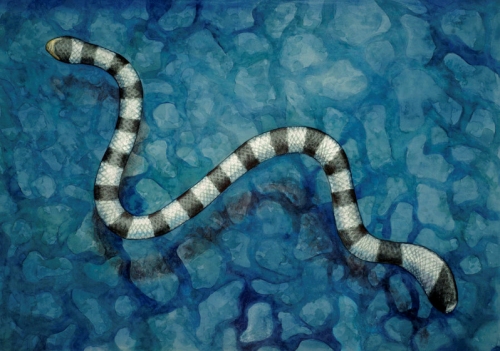
What was the first art related thing you got paid for?
This Kelp Forest illustration for a brochure on diving in the Monterey Bay National Marine Sanctuary. It was a work-for-hire project. Graphite, but printed in one-color (blue).
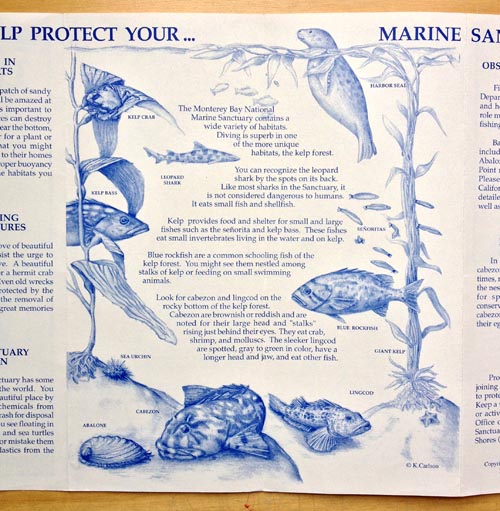
How did you get your first picture book assignment? Which book was it?
My first picture book assignment was a story called “You Can’t Untie a Knot of Toads.” It’s a concept book about what groups of animals are called. A friend wrote it and wanted me to illustrate it, so we could submit it to publishers (we didn’t know about keeping writing & illustrating submissions separate). We got rejection letters from Chronicle and Houghton Mifflin and I have since lost touch with the author.
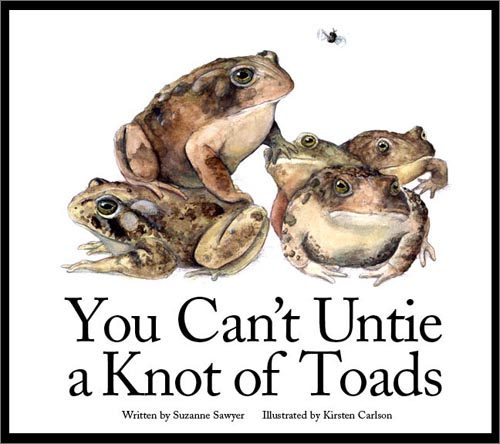
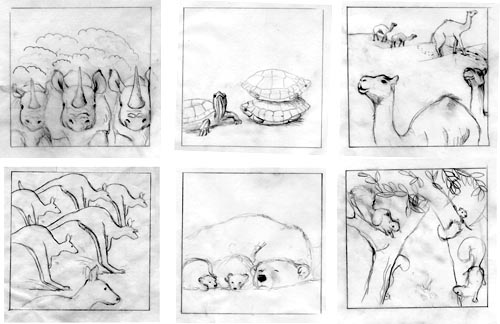
You have quite a resume with books, posters, greeting cards and magazines. Which one got you started?
I started with t-shirt designs and logo designs while still in high school. In my 20s, I did an internship with a group called Friends of the Sea Otter and they put my artwork on boxer shorts and sold tons of them. I think that officially nudged me in the direction of wanting to do more illustration.
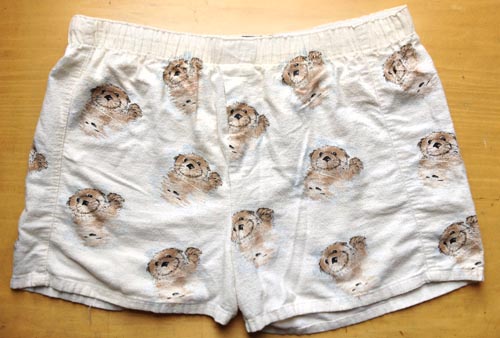
Do you think you will start submitting to the Children’s Magazines out there?
Yes. There are so many amazing magazines for kids and I think a few of them might find my illustration style appropriate. I submitted my work to Ranger Rick in the 90s but was rejected.
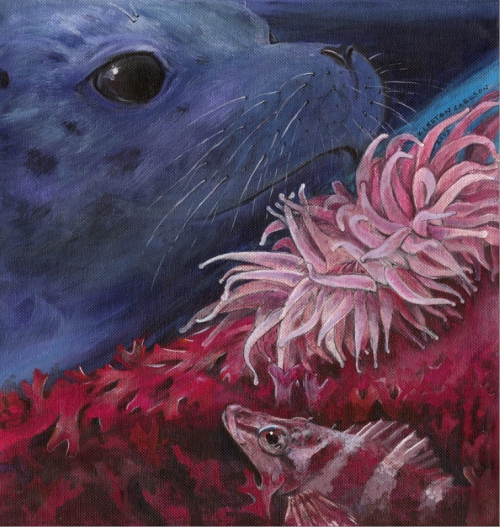
What types of things helped you develop your illustrations and style?
Going to graduate school for scientific illustration was a huge catalyst, and taking classes from people who inspire me through SCBWI and other informal educational groups. But, listening to feedback from fellow illustrators and sketching as often as possible have been the most valuable resources in developing my style. I’ve been consciously working on developing a more narrative style, like the character for Sleepy Seal.
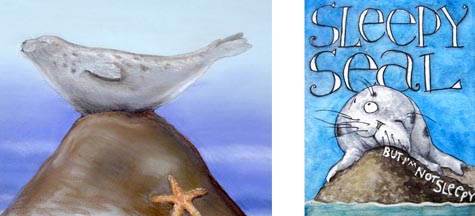
Have the materials you use changed over the years?
Most definitely. I’ve migrated from doing everything by hand to integrating the computer more and more. I still use pencil (and think it is integral to my style) as my primary drawing tool but I’ve expanded coloring my works digitally.
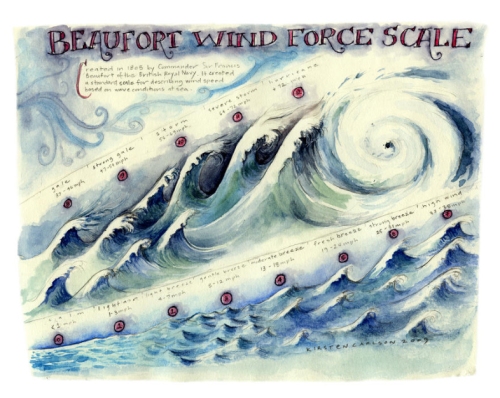
Have you ever tried to write and illustrate a children’s book?
Yes. I’ve actually been taking a break from illustrating to work on my own stories and strengthen my writing. I am currently working on three picture books and one middle grade illustrated novel. One of the picture books is called Pool Shark.
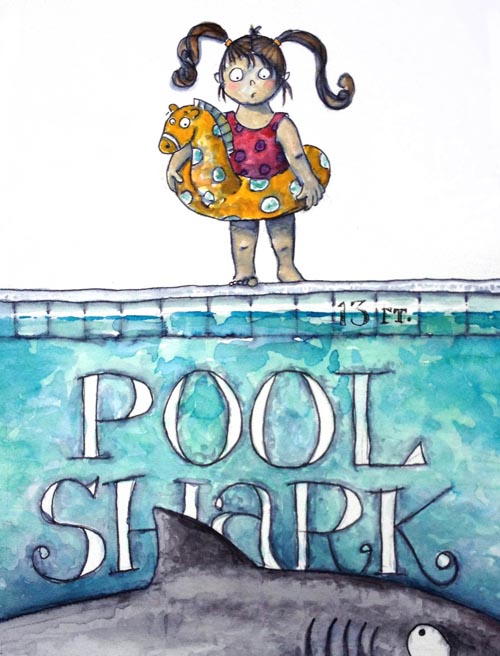
It looks like your first children’s book was “The Giraffe Who Was Afraid of Heights” by David Ufer and published by Sylvan Dell. How did you land that contract?
I was contacted by the publisher after attending the SCBWI NY conference in February 2005. The publisher saw my illustration of a polar bear and sent me the text for a story about a giraffe. I said, “Yes, please!” and I signed a contract two months later. I had six months to complete the artwork.
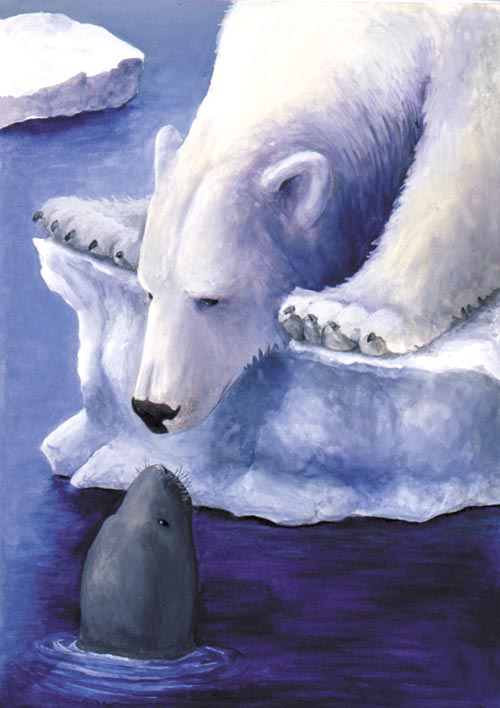
What types of things do you do to get your work seen by publishing professionals?
I have primarily attended SCBWI events and conferences—participating in portfolio and/or illustration showcases, and signing up for critiques. At the SCBWI LA conference, I won 1st place for Realistic Portfolio, two years in a row.

Do you have an agent? If so, who and how long have the represented you? If not, would you like one?
I do not have an agent and am definitely seeking someone to represent me.

How many books have you illustrated?
I’ve illustrated three picture books and one activity book.

Did you self-publish your new activity book, “Where the Land and Sea Meet”? How do people order it if they want a copy?
No, but I am the illustrator, author and art director. The activity book is an education outreach project that a team of scientists published through their universities. It is currently available in English from University of Alaska, Fairbanks, Alaska Sea Grant: http://seagrant.uaf.edu/bookstore/pubs/SG-ED-74.html
And is available in Italian from Pisa University Press:
http://www.edizioniplus.it/scheda-libro/carlson-kirsten/dove-terra-e-mare-si-incontrano-9788884927316-34091.html
It’s also been translated into Spanish but it’s not yet published.

Talk about doing research and your homework. Kirsten takes it to the next level.
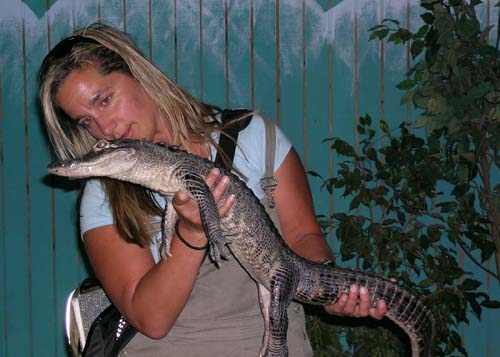
What types of research do you do for your illustrations? It looks like you snorkel. Do you take pictures or do any research before you start a project?
I love to do research, sketch and photograph extensively for projects. I enjoy learning as much as I love drawing. I will sketch in the cold & snow and even underwater to research my subjects.
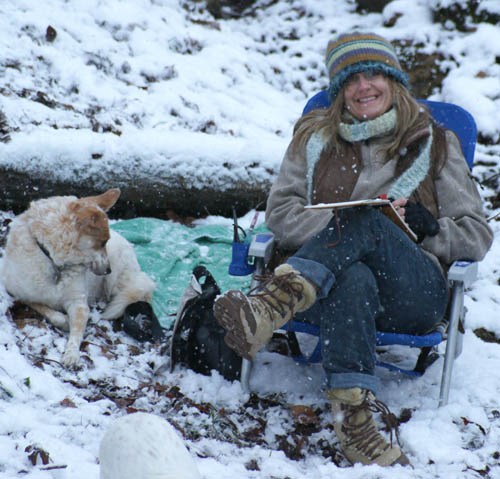
Who is Taylor Trade Publishing and how did you end up illustrating Sea Secrets: Tiny Clues to a Big Mystery for them?
They are the parent company for the imprint, Moonlight Publishing. They are printing and distributing all the educational picture books for a scientific group called The Long Term Ecological Research (LTER) Network. I was contacted by the Education and Outreach Coordinator for one of the LTER research groups because she like my illustrations for Ocean Seasons. I designed and illustrated the book for a flat fee, and worked with Beth Simmons, the Education and Outreach Coordinator on several more really fun education projects (but not kids books).
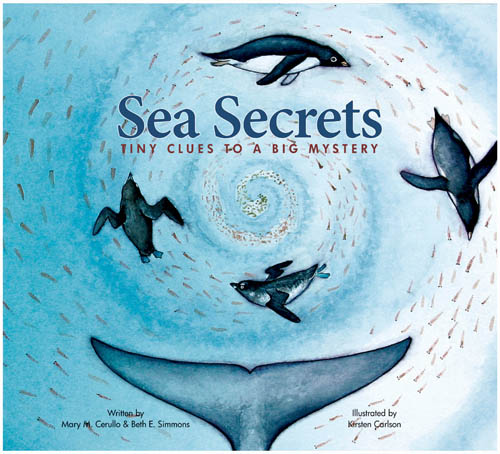
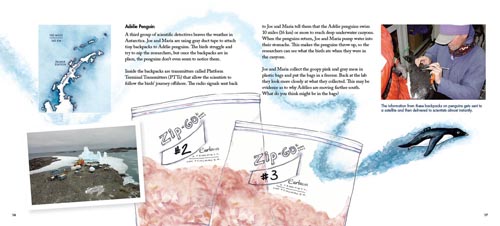
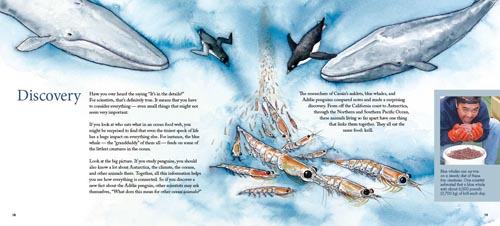
I see Ocean Seasons just came out in paperback. Was it previously printed as a hardcover?
It was published as a hardcover in 2007. Sylvan Dell also offers it as an eBook in Spanish & English.
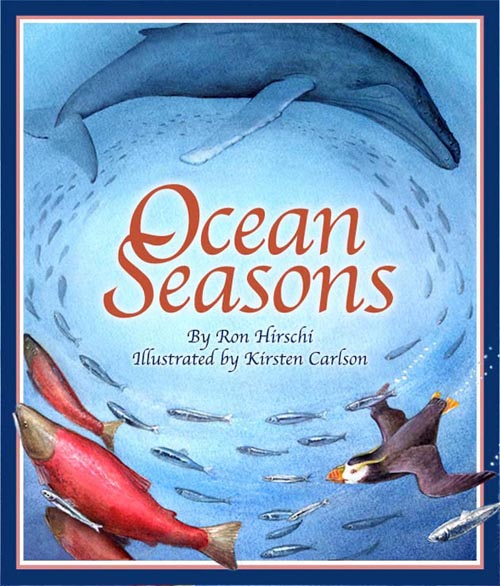
How do you keep your illustrating talent on the minds of your clients?
Ideally, I would be sending out postcards a few times a year, but I have a lot of opportunity to grow in this area. I’m becoming more active in social media as a way to stay connected to clients that are also using social media.
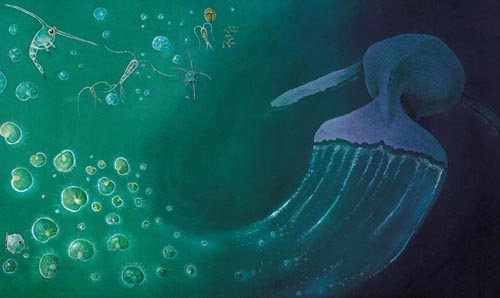
Have you gotten any work through networking?
Most definitely. Meeting people in person and showcasing my illustrations at conferences are the primary ways I’ve gotten work. Specifically, at conferences involving the Society of Children’s Book Writers & Illustrators, National Marine Educators Association, and Western Society of Naturalists.
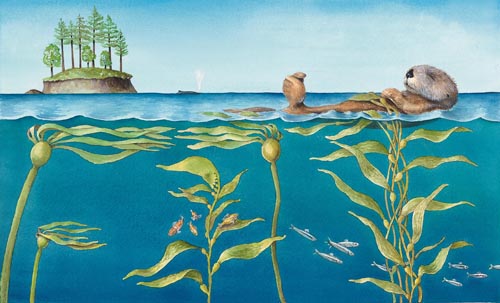
Do you do any art exhibits to help get noticed?
I’ve done one every few years, they are a great motivator to produce work and it’s a great way to reach out to the local community.

Do you ever use Photoshop?
Almost every day. I haven’t decided if I will continue to use them since they are going to be subscription-only, but for now I use Adobe CS5 for 99% of my digital work.
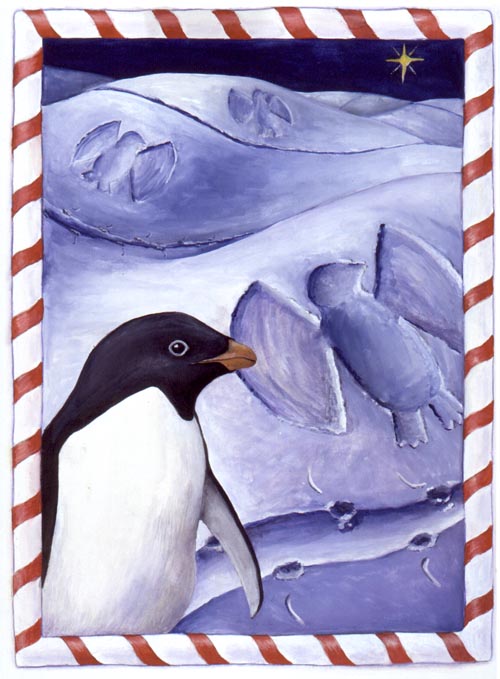
Do you own a graphic tablet? If so, how do you use it?
I have and adore my Wacom Cintiq display and Bamboo tablet. They are fantastic tools for working digitally. I use them primarly for touching up work.
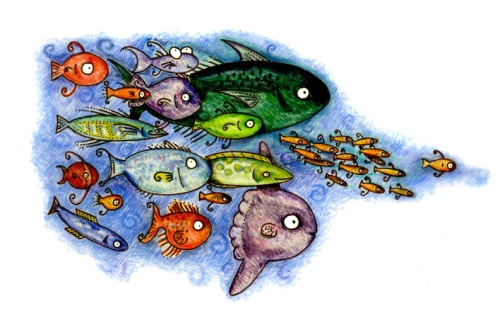
How much time do you spend working on your illustrating?
In an ideal week, I spend 20-30 hours on illustrating. However, I’ve invested a lot of time in the last two years to writing and networking. The last year has been less than ideal creatively because my husband was deployed to Afganistan, and I had to juggle several things solo. But now he’s back and things are getting back to normal. As soon as we’re settled in Hawai’i, I look forward to getting back to my ideal week.

Do you still do your greeting cards?
Yes! I did a greeting card as a promotional mailer for Valentine’s Day this year. The company that originally distributed my cards went out of business and the copyright has reverted to me, and I’d like to continue doing greeting cards as part of my income stream. They are fun and enjoyable short-term projects.
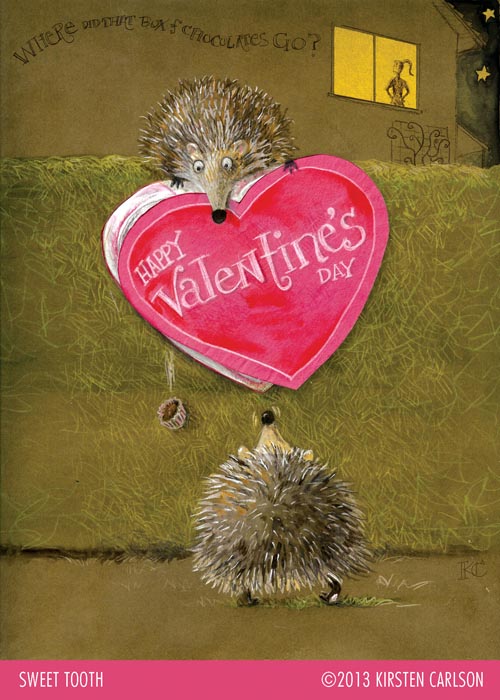
What is the most important tool or material that you use?
I love my sketchbook bag with my beat-up watercolor set, waterbrush, pen and sketchbook. All my art supplies and the computer are tied for a very close second place.
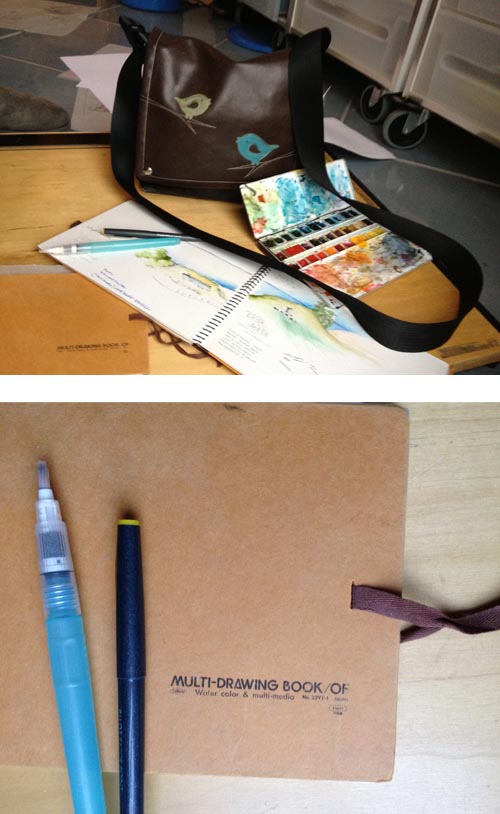
Any exciting projects on the horizon?
No contracts at the moment, but I’m working on several self-motivated projects.

What are your career goals?
My goals are to work on creative projects daily — to do a combination of authoring and/or illustrating children’s stories, creating illustrations for licensing and selling ocean wildlife art in a gallery setting. I have an income goal to make between $10,000 and $1,000,000 annually, dependent on production. I fell far short of that this year.
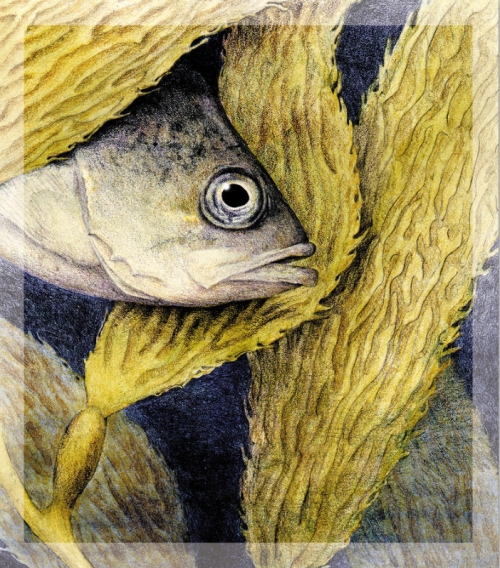
What are you working on now?
I’m focused mostly on the writing-illustrating projects I mentioned earlier.
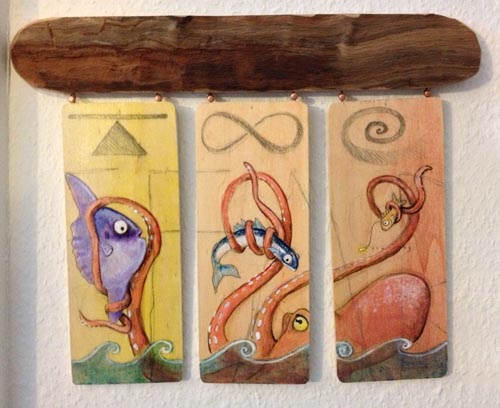
Are there any tips.(Example: Something you love – the best place to buy – a new product that you’ve tried – A how to tip, materials etc.) you can share that work well for you? Technique tips?
I’d recommend trying out a medium you’ve never used, because I did that and it affected me in an unexpected way. I recently took an abstract-art class, created something that was completely outside my style and it helped me loosen up so that I could create a more spontaneous whimsical piece of work (a triptych on wood) that is one of my favorites.
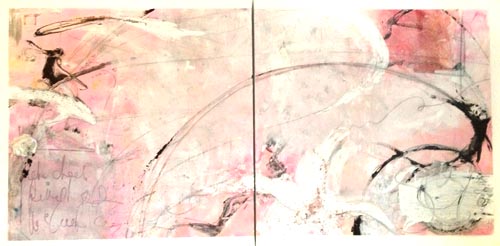
Any words of wisdom you can share with the illustrators who are trying to develop their career?
Stay committed. No matter what.
Keep creating and surround yourself with supportive friends and colleagues, reach out and mentor folks that can learn from you and ask for help from folks you would like to have as mentors.
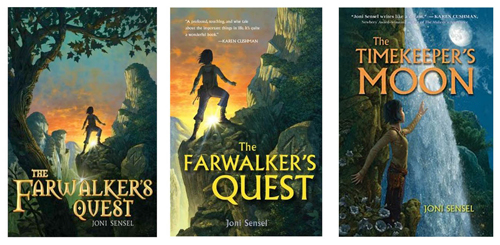
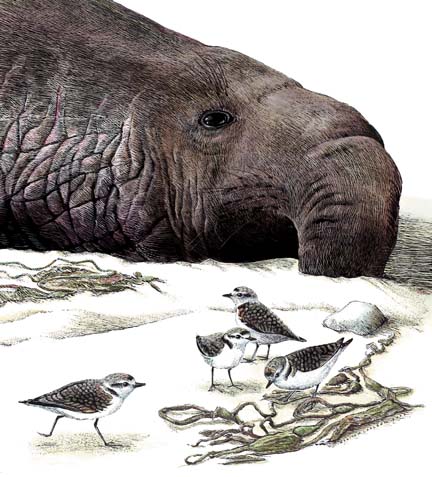 Thank you Kirsten for sharing your process and journey with us. Boy, you really do go the extra mile holding alligators, swimming to the bottom or the ocean, and weathering the cold and snow to get close to nature and your subjects. I enjoyed doing this post and wish you much additional success. For those of you who would like to visit Kirsten you can find her at: www.kirstencarlson.net and www.artsyfishy.com Her twitter name is: kirstencarlson
Thank you Kirsten for sharing your process and journey with us. Boy, you really do go the extra mile holding alligators, swimming to the bottom or the ocean, and weathering the cold and snow to get close to nature and your subjects. I enjoyed doing this post and wish you much additional success. For those of you who would like to visit Kirsten you can find her at: www.kirstencarlson.net and www.artsyfishy.com Her twitter name is: kirstencarlson
Hope you will take minute to leave Kirsten a comment. It is appreciated.
Talk tomorrow,
Kathy
Filed under:
authors and illustrators,
Illustrator's Saturday,
inspiration,
Interview,
Process Tagged:
Artist,
Illustrator Saturday,
Kirsten Carlson,
Montery Bay Aquarium,
scientist 


By: Kathy Temean,
on 3/1/2013
Blog:
Writing and Illustrating
(
Login to Add to MyJacketFlap)
JacketFlap tags:
Illustrator Saturday,
Creston Books,
April Chu,
Interview,
picture books,
inspiration,
Advice,
Process,
authors and illustrators,
Illustrator's Saturday,
Add a tag
 I am an architect with an architecture degree from the University of California, Berkeley. I currently reside in Oakland, California. Most important, I love illustrating and storytelling and it all started when I was very little…
I am an architect with an architecture degree from the University of California, Berkeley. I currently reside in Oakland, California. Most important, I love illustrating and storytelling and it all started when I was very little…
One of my most vivid and earliest memories as a young child was my drawing of an old man sitting on a stool. I couldn’t believe how lifelike he turned out! I showed my grandmother who immediately told my mom, “Did you know your daughter can draw?!” I fell in love with drawing ever since. Everyday after school I would watch cartoons and then try to create my own characters and stories. My school notebooks were often filled with more outlandish doodles than actual notes.
Here’s April:
Before I do any sketching at all, I will read a manuscript over and over many times. Sometimes I even close my eyes and just brainstorm ideas. This step is important to me because this is when all the initial images and emotions I get from a story start forming in my head. I also start doing research and compiling photos at this point as I did for Summoning the Phoenix: Poems and Prose about Chinese Musical Instruments.

Then I start on rough thumbnail sketches. Since I have a hard time drawing at a very small scale, my thumbnails are usually at half size.

Next I refine my thumbnail sketches. I know that for this particular spread, I wanted the background to have a grandiose feeling of wind, waterfalls, and mountains that was reminiscent of a traditional Chinese painting. This was the imagery that popped into my head when I did my initial brainstorming.

Sometimes I have a couple of options with different compositions.
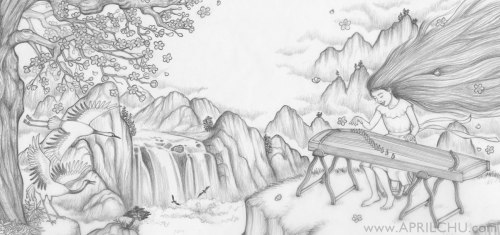
Once the final thumbnail sketch is chosen, I will work on the final, full size sketch.

I scan the image into my computer and color in Photoshop. Here is a final illustration of a girl playing the guzheng from Summoning the Phoenix: Poems and Prose about Chinese Musical Instruments (Shen’s Books, 2013).

How long have you been illustrating?
I have been drawing since as far back as I can remember. I was definitely that kid in school that had her notebooks, binders, and backpack covered in doodles. So technically I have been illustrating for almost my entire life. But professionally, I started in January 2012.

I see you are an architect. When did you decide you wanted to illustrate a children’s book?
After being in the architectural profession for many years, I realized that I could never be totally passionate about building design. I needed to do something that gave me the freedom to be more creative and whimsical. So in 2009 I enrolled in a children’s book illustrating course at UC Berkeley Extension and I instantly fell in love with the combination of storytelling and art. I knew this was the direction I wanted to go in.

Did you go to school for art? If so, where and what did you study?
No, I studied architecture at UC Berkeley.
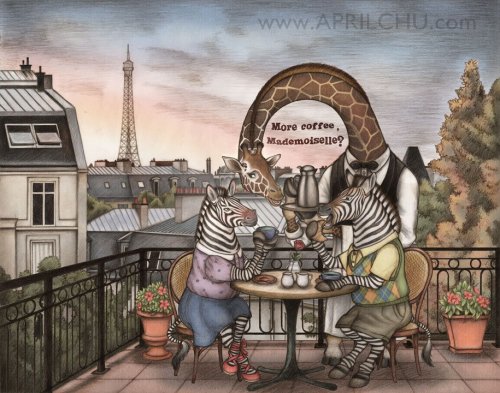
What was the first thing you did where someone paid you for your artwork?
I recently had an art exhibit at a local ice cream parlor for the Oakland Art Walk. I sold a few pieces from that show.
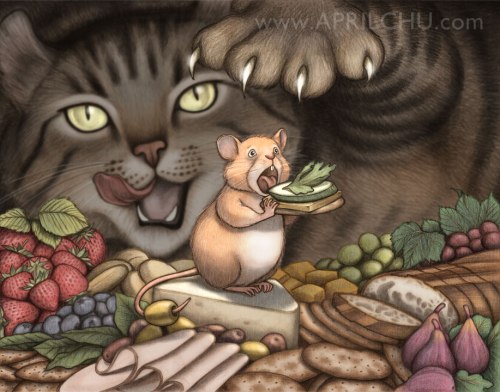
Have you done any work for children’s magazines?
No, but I would love to!

I see that you are represented by Kendra Marcus at BookStop Literary Agency. How did that come about?
Kendra was one of the speakers at the South San Francisco SCBWI Illustrator Day last September. Her straightforward attitude and experience in the children’s book industry really stood out to me. Another huge plus is that her office is located in the Bay Area. Although I didn’t formally meet her at the event, I invited her to check out my art exhibit a few weeks afterwards. It turns out she remembers my work from the Illustrator Day (which is always a good sign) and a week later we met up for coffee.

It looks like you have a signed a contract with Creston Books. Will this be your debut book?
No, the contract with Creston Books has a longer schedule (release date Fall 2014) so my debut book will actually be with Shen’s Books (2013).

Can you tell us a little bit about the book and how that contract came about?
Creston Books is a young, local publishing house started up by author and illustrator Marissa Moss. In fact, the debut list of books is coming this Fall. I met Marissa at her children’s book party this last summer. At the time she was looking for an illustrator for a manuscript she had acquired. She sent me the story to see if I would be interested. The fictional story is comprised of beautiful, minimal text and strong imagery about a family living in a fishing village. Once I read it, I accepted the offer. The book is appropriately titled Village by the Sea.
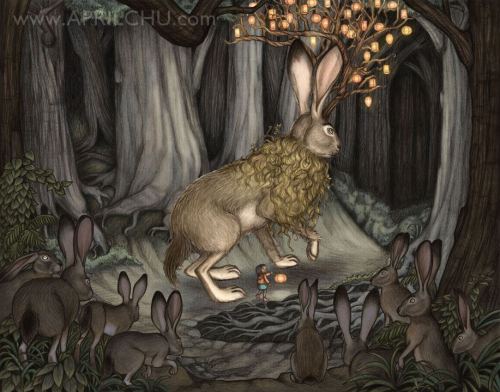
It looks like you also are illustrating a non-fiction book with Shen’s Books. How did that contract happen?
The author Emily Jiang picked up my postcard from the SCBWI LA Conference last year and thought that I would be a good fit to illustrate her book, Summoning the Phoenix: Poems and Prose about Chinese Musical Instruments. Luckily, the publisher agreed.

Do you have any desire to write and illustrate your own book?
Yes, I would love to write and illustrate my own book.

Have you put together a portfolio geared for the children’s book industry?
Yes, I prepared a portfolio for the SCBWI LA Conference last year. It’s a work in progress because I am constantly switching out and adding new pieces to it.

Have you made any book dummies to show off?
Yes, I have a couple of book dummies for stories that I have written and illustrated. One story is about a magical fish ball called Little Me and the other is about an adventurous beagle called Frank the Monster.

Not counting your paint and brushes, what is the one thing in your studio that you could not live without?
My computer, but my coffeemaker would come in at a close second!

Do you try and spend a certain amount of hours every day working on your art?
It seems like for the last year, I haven’t gone one day without working on some kind of art project for at least a couple of hours. Lately I have been working like crazy to meet the deadline for my first book. I actually have to remind myself to get up and stretch every so often. It’s hard to step away when I am really immersed in my work.

What is your favorite medium to use?
At the moment, it’s pencil and digital.

Do you take pictures or do any research before you start a project?
Researching is very important to me before I begin a project especially for the nonfiction book about Chinese musical instruments I am working on with Shen’s Books. In this case, researching on the Internet was not adequate since I needed to have a good detailed look at each instrument. Fortunately, there is a local Chinese youth symphony that allowed me to take photos during their practice. I was able to get a firsthand look at how the musical instruments were played, what they sounded like, and what they looked like in real life. All those elements eventually shaped the final artwork.

Do you think the Internet has opened doors for you?
Yes, the Internet is definitely a great marketing tool and is a convenient way for people to view my portfolio. I was really opposed to social media sites at first but then I came to terms with the fact that it’s a necessary evil because it’s one of the main ways that people interact and stay connected nowadays. So now I have learned to embrace it and to have fun with it.

Do you use Photoshop with your illustrations?
Yes, I scan my pencil drawings and then color them in Photoshop.

Do you own or have you ever tried a graphic Drawing Tablet?
I own a Wacom Bamboo tablet. It’s pretty basic but does the trick so far.

Do you think your style has changed over the years? Have your material changed?
I am constantly learning new things and refining my craft. So I have definitely evolved as an illustrator but there are certain elements of my style that has carried through. Initially I was set on being a traditional artist. My medium of choice was either watercolor or colored pencil. Then I ventured out and tried using Photoshop to tweak and then color the illustrations. To me, it’s just another artist’s tool and I have never looked back since. Now I am more comfortable with experimenting with other materials or I may even go back to using watercolor in the future.

How do you market yourself?
Besides using the Internet (updating Facebook, Twitter, my blog), I attend SCBWI events, hand out postcards, participate in art shows, and enter in art contests. Bottom line is I try to get myself out there as much as possible because I never know who is going to see my artwork.

Do you have any career dreams that you want to fulfill?
I often daydream that I would follow in the footsteps of illustrators that I admire: Chris Van Allsburg, Brian Selznick, Shaun Tan…just to name a few. Not only do they all have long lasting careers, but their work has also branched out into the world of film and animation. If you’re going to dream, why not dream big!
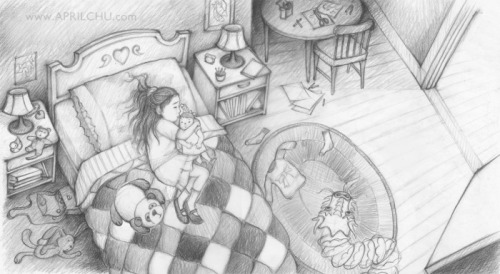
What are you working on now?
I am working on my two book illustration projects, submitting a proposal for another art show, and developing some of my own stories and illustrations.

Do you have any material tips you can share with us? Example: Paint or paper that you love – the best place to buy – a new product that you’ve tired – A how to tip, etc.
I could not function without my iMac, Photoshop, Epson large format scanner, and Cuisinart Grind and Brew Coffeemaker.

Any words of wisdom on how to become a successful illustrator?
I strongly believe that if you work hard and stay focused, you can achieve anything. Success will follow naturally. Stay inspired and don’t be discouraged because the path to success is different for everyone. Last but not least, remember to have fun!
Thank you April for sharing you journey and process with us. Please let us know when you picture books come out. We’d love to see them and cheer you on. You can visit April at: www.aprilchu.com
If you have a moment I am sure April would like to read your comments. I enjoy reading them, too, even if I don’t have time to reply to all of them. Thanks!
Talk tomorrow,
Kathy
Filed under:
Advice,
authors and illustrators,
Illustrator's Saturday,
inspiration,
Interview,
picture books,
Process Tagged:
April Chu,
Creston Books,
Illustrator Saturday 


Jon Stommel was born and raised in Indianapolis, Indiana. He attended the Columbus College of Art and Design, where he recieved a BFA in Illustration in 2009. Jon now resides in Portland, OR, where he works as a professional mural painter and freelance illustrator. Jon has painted murals in Ohio, Georgia, Oregon, and Washington, for clients including Mellow Mushroom Pizza Bakers Inc., Columbus Metropolitan Library, and the Ohio Environmental Protection Agency.
Jon works as a freelance illustrator under the moniker “Treehead Illustations”. He likes to draw and paint and read and ride bikes and hopes to do that for the rest of his life.
Here is Jon’s work and his process for his first picture book titled, How BJ Diana Came to Live at the Z House by Holly Zanville:

I make the drawing based on the client’s general description of what they want depicted. Once it’s drawn, I take a photo of the drawing, which I then email to the client. After the drawing is o.k’d by the client, it is then scanned and my partner takes it into photoshop. Using the layer multiply technique, he is able to color the drawing digitally while still retaining the original line work and shading. The result is an image that has both the intense color and layered transparency quality of a digital painting and the texture of a graphite drawing on paper.


Same as above description: Showing Final Sketch and Below – Final Illustration.


Did you know anyone who had illustrated a children’s book, in order to help you understand the nuances of a picture book?
I had an illustration teacher at CCAD named Mike Boley who gave me a lot of valuable advice when it came to illustrating children’s books. Also, Ron Tardino was my teacher for the illustrative drawing class that I mentioned before, where we went to the zoo to draw animals. He helped me formulate the idea for several stories that I still plan to write and illustrate. It was from these two teachers that I learned the nuances of picture book illustrating.

Was this self-published book you did for Holly Zanville the first time you tried you hand at illustrating a book?
Yes.

Can you share the process you used for the illustrations with the imaginary monsters and kids?
They were done on cold press watercolor paper with a good amount of tooth to it. They were lightly sketched with pencil, then water colored, and then tightened up and detailed with additional pencil work at the end.

What was the first thing you got paid to do?
During the summer after my freshman year of college I started doing large portraits in charcoal on drawing paper and displaying them at the coffee shop that I worked at. They got a lot of attention there, and I ended up getting a few commissions each week from customers that were coming in and seeing them. I would draw famous musicians and artists for my own personal practice, display them, and then end up drawing people’s family members or the musicians, artists, authors, or other historical figures that they found particularly inspirational.

When did you decide you wanted to make a career using your artistic talent?
When I was a senior in High School I made a choice between attending art school to be an illustration major, or attending a State University to become a business major. In the end, I went with my passion, which was making art. It has been a challenge ever since graduating to continue finding work and new clients, but I wouldn’t change my decision for the world. I get to do what I love to do every day for a living, and for me, that is priceless.

I see you went to the Columbus College of Art and Design. Can you share some of highlights of attending the school and little bit about the classes?
CCAD is a great school. The number of students usually averages around 1,500, so it’s a pretty tight-nit community. Some of the highlights of attending the school was being involved in various group shows in alternative gallery spaces around the city of Columbus while still in my undergraduate studies. These experiences really helped to give me the confidence and experience to continue pursuing gallery exhibition opportunities after graduating. In the illustration program, I was able to take classes in humorous illustration, children’s book illustration, and professional practices, which helped me to develop a website, write invoices, and find clients. My favorite illustration class that I took at CCAD was an illustrative drawing class. This class would meet twice a week during the fall semester at the Columbus Zoo, where we would do life drawings of animals for three hours. About halfway through the semester, we would take all of the drawings that we’d done from life and begin to develop characters and formulate a story based on them. It really helped me to understand how to draw animal anatomy and how to design cartoon characters for storytelling.

Do you feel any of your college training helped develop your style?
The illustration program at CCAD actually encouraged everyone to develop their own style. What was emphasized more so, was composition, color interaction, variety of point of view, believability of character anatomy. Each teacher had their own particular style that they had developed over the years, and some students were clearly influenced by these when developing their own. As for me, I had my illustration heroes picked out well before I took illustration classes. These included Shel Silverstein, Maruice Sendak, Dr. Suess, and Edward Gorey, to name a few. These were the artists that I continued to read, view and study as I developed my own style.

Did the college help you get an illustrating job after you graduated?
There were classes specifically focused on teaching us how and where to look for illustration work – various websites and databases for example. CCAD has a ”careers” website where clients looking for illustrators post jobs semi-regularly. There was also a career fair where all visual communications related majors – illustrators and designers – were able to set up a table with their portfolio. Prospective employers walked around and perused students’ work and handed out business cards. In my case, I wanted to be an independent or freelance illustrator. I’ve had luck through gallery shows, mural painting, and other personal friendships getting a lot of work through word of mouth. I never wanted to be employed as a professional, office- type designer, so I’ve sort of had to blaze my own path this far.

Some areas of the country have strong artist communities. Would you consider Columbus one of them?
Absolutely. Columbus has CCAD, Ohio State University, and a handful of other colleges that offer art in various disciplines as a major. As a result, there are a ton of young artists who have graduated from these various schools and decided to continue creating and displaying artwork in Columbus. There are a variety of galleries to exhibit in. The “Do-It-Yourself” scene in Columbus is also particularly strong. I’ve displayed work in a handful of alternative gallery spaces in warehouses and in people’s homes alongside many other young and emerging artists.

I really like the illustrations you used on your website for each heading. How did you do them?
The heading illustrations were all done with watercolor and micron ink pens. My process for those involved drawing the image in graphite on cold press watercolor paper, which I prefer to use because it adds a sense of texture to the image. I then colored the images with watercolor paints and drew the line work over the top of them with micron pens.

How did you get started doing murals?
I went to a show in New York during the winter break of my sophomore year of college.
It was a show where 30 or more ”street artists” had painted the whole interior of a five story building on the corner of Wooster and Spring street in Soho. The experience was truly transformative for me. Afterward, I felt like I had found a new direction to follow with my own work. When I got back to Columbus I decided I needed to start painting walls myself, because I wanted to be able to create the same sort of profound and moving experience for others that I had had myself. I started with the walls in my own room, changing it into an imaginative forest environment. Then I talked with the owner of a bar down the street and got permission to paint a collaborative mural with some friends on the exterior wall on the back of his building. From there, I just continued to paint walls in people’s apartments, in shops and restaurants, and on outside walls around Columbus over the next four years that I lived there. I can honestly say that I am now thoroughly addicted to the process.

Is there a demand for illustrating murals?
There is somewhat of a demand for mural paintings. The trick though, in my opinion, is to create the demand for one’s work by making the work first. To paint an exterior wall with a beautiful and eye-catching mural is not only to transform the environment in which the mural is placed, but also to show people what is possible when it comes to mural painting. The more murals that I painted on exterior walls around Columbus, the more emails or phone calls I would get from people here and there, wanting me to paint a mural for them. After a while, I could start to tell that there was truly a demand there for my particular style of mural painting, and it was a result of all the work that I had done for fun changing outside walls of buildings all around the city.

Do you paint them directly on the walls or paint them digitally and have them printed on vinyl to use on the wall?
I’ve never had anything printed on vinyl and adhered to a wall. I have in one instance painted on sheets of masonite in my studio apartment, and then transported those sheets to a library and installed them on the wall. This was a good option for that project, because the mural was installed in the children’s book section, and the walls were raised off the ground about teen feet. It wouldn’t have been safe to be on extension ladders in an area were children were busy traversing and looking for books to read. In every other instance, I have painted directly on the wall of whatever place I’ve painted a mural.

Why do you call your company Tree Head?
The name Tree Head refers to using one’s imagination as a way to explore a myriad of possibilities in image making and storytelling. Just as a tree starts as a sapling and then spreads outwards and upwards over time as it ingests water, minerals, and sunlight, so does an artist’s imagination and vision. The more images, symbols, scenes, characters, and environments that an artist has rendered and experimented with, the more experience that artist has to draw from when trying to branch out even further in image making.

How did you get involved with doing children’s books?
Holly Zanville is the first writer that I’ve worked with in illustrating children’s books. She contacted me because she was referred to me by a woman that I’ve known for many years from Indianapolis, where I was born and raised. Teresa Detrich was the mother of one of my good friends when I was growing up in Indianapolis. When I got older, she commissioned me for a large portrait project for the Lumina Education Foundation. Teresa referred me to Holly when she was looking for an illustrator for her books.

It looks like this painting was done on masonite. How did you do it?
Yes, some of my paintings are done on masonite with a combination of latex, acrylic, and either sharpie paint markers or india ink. I always put a coat of krylon clear coat over them at the end to help keep them archival.

How did you decide how to charge for that job?
I thought about how much time each illustration would take to draw, and I took into consideration that I would be working with another artist, who does the digital coloring for the illustrations. When I had figured how many hours each of us had spent, I calculated an hourly rate, and estimated the cost of each illustration based on how we would like to be compensated for our time.

How much direction did Holly want to provide?
Holly and I met and came up with a basic idea for what sort of characters and action would be involved in each illustration. From there, she’s been really great about giving me a lot of freedom in deciding from what perspective, or angle each illustration would be viewed. Our process involves my sending her the drawing for each illustration, then upon her approval, the artist who I collaborate with, Travis Czekalski, digitally colors the illustrations with my own critical input during that step of the process. We then send Holly the finished, color illustration. We’ve developed enough communication and trust at this point, that there are seldom final edits that need to be made. However, we are always happy to make them if Holly sees something that she would like to have changed.

Have you sent out samples of your artwork to children’s publishers, seeking business?
I have not yet. I do plan do so, however, once we’ve finished the second of Holly’s books.

Do you think you will continue illustrating picture books?
Absolutely. I currently work more often as a professional mural painter, but I hope to continue illustrating picture books for various authors in the years to come.

I see you collaborate with another person with your work. What type of things does he do with you?
I work collaboratively with Travis Czekalski. We’ve painted over twenty interior and exterior murals together over the last two years, and have illustrated one children’s book with another one in the works. The way we work together on murals is a little different than the way we collaborate on illustrations. For murals, some time I draw the design for a wall, and sometimes he does. Whoever has drawn the initial design then allows the other to digitally color that sketch before sending it off to the client for approval. Once the design is approved, we both paint the image, with Travis focusing more on paint mixing and color fills, while I focus more on drawing the initial image and creating the methodical line work at the end.
When it comes to illustration, I do all the character design and drawing. Travis then takes the drawn illustration on paper and scans it into the computer. Once he has a digital version of the drawing, he takes the image into photoshop and colors it digitally. Then I give him any feedback that I might find necessary to adjust the colors before sending the author the final version.

Have you ever thought of trying to get an agent?
I plan to do so very soon, as I think our portfolio is approaching the point at which it will have enough work examples. We’ve been working together for just about two years now, and have had a good amount of luck finding commissions without an agent. However, I do believe it may be time to increase our likelihood of finding more work by accepting representation.

What are you favorite materials?
When working on my own individual work I really enjoy using watercolor and micron pens. I also do more bold, graphic paintings at times using a combination of acrylic paint and India ink for line work. When I paint murals I mostly use latex paint, but sometimes I use aerosol to create certain desired effects.

This illustrations titled, “Why So Glum” has a different looks. How did you get this look?
This piece was painted using acrylic paint on a slick particle board. I then scratched paint away using my house keys in order to draw the image and create a ”distressed” quality. Once the basic image was scratched, I went back in with blue sharpie for the lines and a sea-foam green paint marker for the eyes. This painting was done as an exercise, and not necessarily in preparation for a mural.

Have you ever submitted your artwork to Magazines or Newspaper?
My work will be featured in an Ohio State University magazine called “The Journal” on October 1st. Other than that, I have not yet submitted my artwork to any other publications, but I do plan to do so in the not too distant future.

How do you find business?
Upon moving to Portland, Oregon, I’ve used RACC.org’s job page to find a number of mural commissions. Prior to that, I had a lot of luck finding work in Columbus as a result of showing my fine art paintings in various coffee shops, bars, DIY spaces and galleries. Also, painting murals is always the best way to advertise my work, and has been the greatest method for stirring public interest.

Do you have any writing aspirations?
I do have some writing aspirations. I have fully outlined two stories that I plan to write and illustrate sometime in the next few years. Commissions keep me entirely too busy as of right now to find any spare time to write and illustrate my own stories, but I fully intend on fleshing them out at some point.

Do you use Photoshop? How and where do you use it?
I do. I use Photoshop to adjust the hue, saturation, and contrast of finished illustrations that are done with traditional mediums. Travis and I also rely on Photoshop to do digital coloring for mural sketches and for finished story book illustrations that we collaborate on.

Do you have or use a graphic tablet? If so, which one do you have? Do you like it?
I have a Wacom Cintiq monitor that I use to do all digital coloring for mixed digital and traditional illustrations. I really do enjoy using it, and it offers a lot of benefits over the separate tablet. With the Cintiq monitor, one can draw or color directly onto the image that is being displayed.

Where do you do your illustrating? I have a home office where I do my illustrating.
Do you have a studio set up? I also have a painting/drawing studio set up in my apartment where I can work on larger drawings and paintings on canvas, paper, and wood.

What are you working on now?
I am currently working on illustrating the second book in the “Z-House” series, written by Holly Zanville. Travis and I also have an elementary school in Lincoln City, Oregon that we’ve been contacted to paint murals for in the coming fall.

Do you have any little tips that you can share with other illustrators looking for work?
I’ve had a lot of success in handing out business cards during conversations where my profession comes up. Displaying artwork in coffee shops and other retail spaces is also a good way to get one’s work seen by a large number of people. Just don’t forget to include your contact info when displaying artwork in public spaces so that potential clients can get a hold of you if they’re interested!

I asked Jon why he recently moved to Portland and he said, “I moved from Columbus to Portland at the beginning of November, 2011 because a group of my friends from CCAD had moved here prior and told me that it was a great city in a lot of ways. The natural surroundings are breathtaking, it’s the nation’s most easily bike-able city, and the art and music scene are both extremely rich here. I’ve found quite a few opportunities to paint murals and display artwork in a handful of galleries since I’ve been here, and have been on some of the most breathtaking hikes and beach trips that I’ve ever been on.”
I have always heard how nice Portland is, but I have never been there. I have been to Seattle and thought that was wonderful. Thank you Jon for sharing your journey at college and how much you have accomplished in the few years since you graduated. We be be keeping an eye on your progress. You can see more of Jon’s work or contact him at www.imatreehead.com. He also works in collaboration with his partner Travis Czekalski, whom he co-owns a mural painting business with called “Rather Severe Mural Painters”. Their website can be found at: www.rathersevere.blogspot.com . I am sure Jon would love to hear your comments. Thanks!
Talk tomorrow,
Kathy
Filed under:
authors and illustrators,
Illustrator's Saturday,
Interview,
Process Tagged:
Freelance illustrator,
Gallery of work,
Illustrator Saturday,
jon Stommel 


By: Kathy Temean,
on 8/18/2012
Blog:
Writing and Illustrating
(
Login to Add to MyJacketFlap)
JacketFlap tags:
Piggy Toes Press,
Interview,
Blog,
inspiration,
Process,
conference,
Sarah Dillard,
illustrating,
authors and illustrators,
Illustrator Saturday,
Illustrator's Saturday,
Add a tag

Sarah Dillard studied art at Wheaton College and illustration at Rhode Island School of Design. She is an illustrator for children’s books and the stationery and giftware markets. Sarah’s first author/illustrated book, Perfectly Arugula, was published in 2009 and the audio book version won the Gold Award for the 2010 National Parenting Publications Awards (NAPPA) Storytelling competition. She lives on a mountain in Vermont with her husband and chocolate lab.

TIGHTROPE POPPY written by Sudipta Bardham and illustrated by Sarah Dillard

If you were an EVEN NUMBER written by Marcie Aboff and illustrated by Sarah Dillard

Here is Sarah and her process:

Most of my work starts with a very rough doodle, just to get an idea of the composition.

This is another rough sketch with a little more detail.

This is a more complete sketch with water soluble graphite pencils to work out tones and more detail.

The finished (?) painting. This was done in watercolor and gouache on 300 lb water color paper. I love the weight of this paper. It does not buckle when wet so there is no need to stretch it. I tend to start with watercolor and then build up the color with gouache. Then I add texture with gouache and a tiny brush. I liked the november-ish feeling of this and could have stopped here but everything looks better with a little snow, so..

I added a dusting of snow and some swirly wind in Photoshop.

And then it just kept snowing. Now that bunny is really cold!

Have you ever thought about writing and illustrating your own book?
I have! My book “Perfectly Arugula” was published by Sterling in 2009. I have two books under contract now that will be coming out in 2014.
![]() 3 Comments on Illustrator Saturday – Sarah Dillard, last added: 8/19/2012
3 Comments on Illustrator Saturday – Sarah Dillard, last added: 8/19/2012
 Annie Wilkinson is the youngest of eight children and the mother of two. She works in a variety of mediums including traditional and digital, creating bright and whimsical illustrations for both books and products. She also has a background in design and as a fine artist, two skills that she calls upon quite frequently when illustrating. She is currently working on her own picture book.
Annie Wilkinson is the youngest of eight children and the mother of two. She works in a variety of mediums including traditional and digital, creating bright and whimsical illustrations for both books and products. She also has a background in design and as a fine artist, two skills that she calls upon quite frequently when illustrating. She is currently working on her own picture book.
















































 Colleen Rowan Kosinski has always been involved in creative projects. She is an alumna of Moore College of Art and graduated from Rutgers University with a BA in Visual Arts. While in college, Colleen worked with The Robert Wood Johnson Hospital as part of her curriculum. She developed, designed and constructed step-by-step instruction booklets to be used by nursing staff. After graduation, Colleen worked as a jewelry designer. While working as a designer she won a scholarship to the Gemological Institute of America and earned a certificate in Colored Stones. Colleen, having a great interest in science, volunteered at the Academy of Natural Sciences in Philadelphia, PA. She worked with Dr. John Gelhaus in the entomology department rendering illustrations of insects for scientific publications. She also worked at the Franklin Institute in Philadelphia, PA, were she designed illustrations for a cookbook featuring Ben Franklin’s favorite dishes.
Colleen Rowan Kosinski has always been involved in creative projects. She is an alumna of Moore College of Art and graduated from Rutgers University with a BA in Visual Arts. While in college, Colleen worked with The Robert Wood Johnson Hospital as part of her curriculum. She developed, designed and constructed step-by-step instruction booklets to be used by nursing staff. After graduation, Colleen worked as a jewelry designer. While working as a designer she won a scholarship to the Gemological Institute of America and earned a certificate in Colored Stones. Colleen, having a great interest in science, volunteered at the Academy of Natural Sciences in Philadelphia, PA. She worked with Dr. John Gelhaus in the entomology department rendering illustrations of insects for scientific publications. She also worked at the Franklin Institute in Philadelphia, PA, were she designed illustrations for a cookbook featuring Ben Franklin’s favorite dishes. Original pencil sketch
Original pencil sketch



 I brought the colored drawings back into the original composition.
I brought the colored drawings back into the original composition.
 I adjusted scale and brightness.
I adjusted scale and brightness.





 Do you think the classes you took in college influenced your style?
Do you think the classes you took in college influenced your style?



 What is your favorite medium to use?
What is your favorite medium to use?


 Do you use Photoshop with your illustrations?
Do you use Photoshop with your illustrations?









 n
n

 n
n





















 n
n
 n
n
 n
n
 n
n
 n
n
 n
n

 Kirsten’s career combines what she loves best about science, art & design. She is dedicated to creating illustrations, graphics, logos and stories that inspire connections between people & nature.
Kirsten’s career combines what she loves best about science, art & design. She is dedicated to creating illustrations, graphics, logos and stories that inspire connections between people & nature.








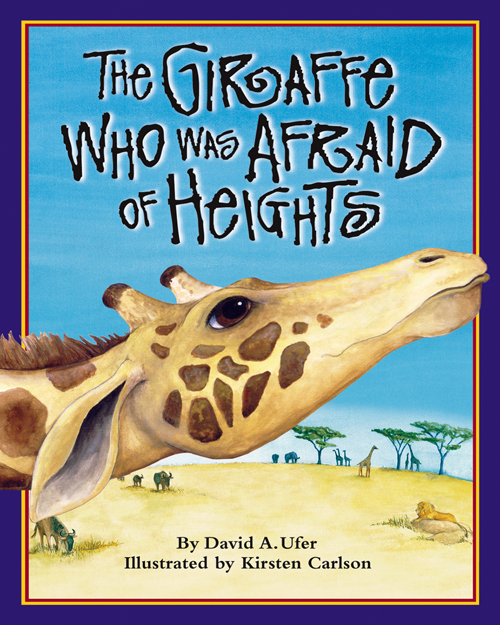
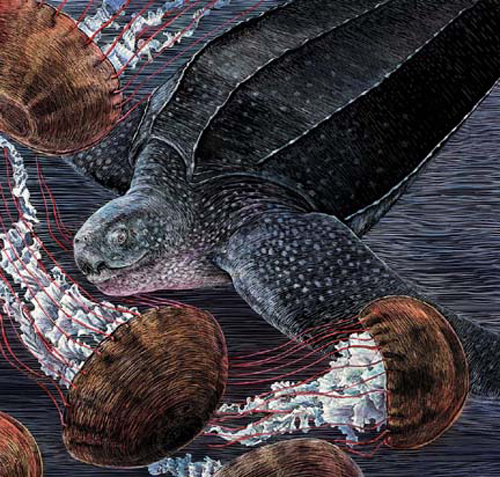



































 Thank you Kirsten for sharing your process and journey with us. Boy, you really do go the extra mile holding alligators, swimming to the bottom or the ocean, and weathering the cold and snow to get close to nature and your subjects. I enjoyed doing this post and wish you much additional success. For those of you who would like to visit Kirsten you can find her at:
Thank you Kirsten for sharing your process and journey with us. Boy, you really do go the extra mile holding alligators, swimming to the bottom or the ocean, and weathering the cold and snow to get close to nature and your subjects. I enjoyed doing this post and wish you much additional success. For those of you who would like to visit Kirsten you can find her at:  I am an architect with an architecture degree from the University of California, Berkeley. I currently reside in Oakland, California. Most important, I love illustrating and storytelling and it all started when I was very little…
I am an architect with an architecture degree from the University of California, Berkeley. I currently reside in Oakland, California. Most important, I love illustrating and storytelling and it all started when I was very little…














































































 Kirstie Edmunds is a children’s book illustrator from London, UK and is represented by the Prospect Agency in Brooklyn, NY. She moved to illustration following a career in graphic design and art direction, and has debuted this year with, ‘So You Want To Be A Rock Star,’ written by Audrey Vernick, for Walker/Bloomsbury, and, The Monster Who Lost His Mean’ by Tiffany Strelitz-Haber, and Henry Holt/Macmillan. Both Audrey and Tiffany are located in New Jersey - That is how I found her and her artwork. Like I have said before to picture book writers, get you illustrator to contact me and get featured. It is a great way to encourage sales.
Kirstie Edmunds is a children’s book illustrator from London, UK and is represented by the Prospect Agency in Brooklyn, NY. She moved to illustration following a career in graphic design and art direction, and has debuted this year with, ‘So You Want To Be A Rock Star,’ written by Audrey Vernick, for Walker/Bloomsbury, and, The Monster Who Lost His Mean’ by Tiffany Strelitz-Haber, and Henry Holt/Macmillan. Both Audrey and Tiffany are located in New Jersey - That is how I found her and her artwork. Like I have said before to picture book writers, get you illustrator to contact me and get featured. It is a great way to encourage sales.

 Final sketch for the page, re-composed. I’d usually take this and do a block-out, or some tonal studies, before taking it into final colour.
Final sketch for the page, re-composed. I’d usually take this and do a block-out, or some tonal studies, before taking it into final colour.







 Tim Bowers was born in Troy, Ohio, where he began drawing at an early age. His career in illustration grew from his childhood interest in art and an active imagination. Even then, his artwork reflected an ability to tell stories, using humorous characters.
Tim Bowers was born in Troy, Ohio, where he began drawing at an early age. His career in illustration grew from his childhood interest in art and an active imagination. Even then, his artwork reflected an ability to tell stories, using humorous characters.


 This week we feature the wonderful illustrator Barbara Johansen Newman. Barbara has been illustrating professionally for more than 20 years. She’s done art for books, art for magazines and newspaper articles, art for calendars and advertising, greeting cards, corporate reports, medical reports, and invitations.
This week we feature the wonderful illustrator Barbara Johansen Newman. Barbara has been illustrating professionally for more than 20 years. She’s done art for books, art for magazines and newspaper articles, art for calendars and advertising, greeting cards, corporate reports, medical reports, and invitations.



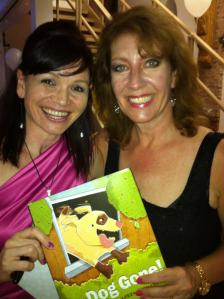
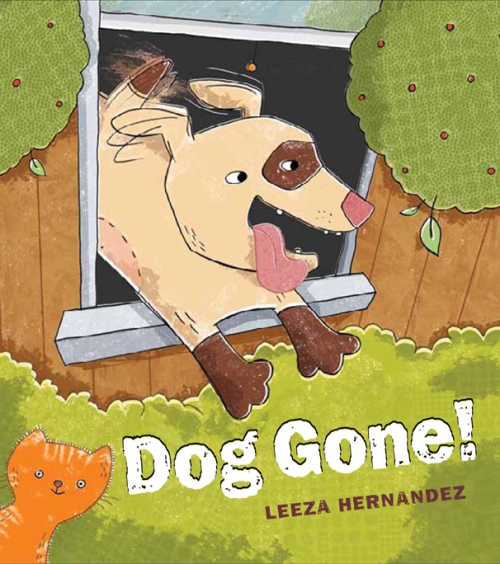

 This week we have illustrator Alik Arzoumanian. She received my BFA in Illustration from the Massachusetts College of Art and Design in Boston in 2004. The first children’s book she illustrated was
This week we have illustrator Alik Arzoumanian. She received my BFA in Illustration from the Massachusetts College of Art and Design in Boston in 2004. The first children’s book she illustrated was 



 This week I would like to introduce you to Illustrator Louise Catherine Bergeron. Louise sent me a couple of pieces of her artwork at the end of last year. What she sent was perfect for New Year’s Eve and New Years Day. I got busy and she sent another one for this month and I immediately recognized her style and asked myself why hadn’t I featured her before this. So persistence pays off. Keep that in mind when you assume someone isn’t interested when you do not hear back from them right away. Keep trying – Timing is everything! Here’s Louise:
This week I would like to introduce you to Illustrator Louise Catherine Bergeron. Louise sent me a couple of pieces of her artwork at the end of last year. What she sent was perfect for New Year’s Eve and New Years Day. I got busy and she sent another one for this month and I immediately recognized her style and asked myself why hadn’t I featured her before this. So persistence pays off. Keep that in mind when you assume someone isn’t interested when you do not hear back from them right away. Keep trying – Timing is everything! Here’s Louise:


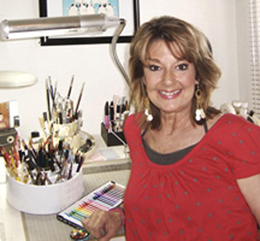 Our featured illustrator this week is Susan Drawbaugh. She loves to draw and do whimsical illustrations. Early in her art career she was greatly influenced by a man she met while touring the MGM Animation Studios, Ben Washam. As one of the original animators of the Bugs Bunny, Road Runner, and Tom & Jerry cartoons, he ended up passing down the skills of his trade by teaching a small group of aspiring animators from his home. Susan was one of those fortunate students.
Our featured illustrator this week is Susan Drawbaugh. She loves to draw and do whimsical illustrations. Early in her art career she was greatly influenced by a man she met while touring the MGM Animation Studios, Ben Washam. As one of the original animators of the Bugs Bunny, Road Runner, and Tom & Jerry cartoons, he ended up passing down the skills of his trade by teaching a small group of aspiring animators from his home. Susan was one of those fortunate students.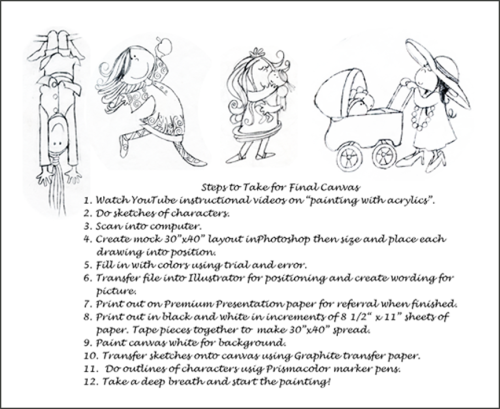
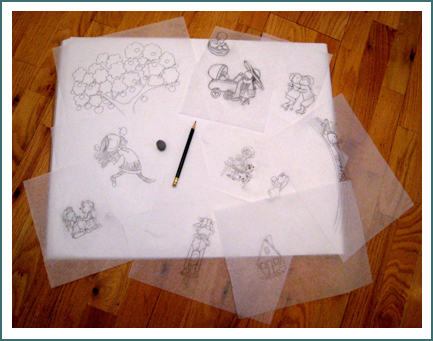
 After graduating from the University of Washington concentrating in graphic design, Nancy worked as a graphic designer and art director in the technology industry before discovering the magic of children’s books. Nancy lives and works in Seattle, Washington. She enjoys creating characters that have a sense of humor. She works in watercolor, colored pencil, and pen and ink – mixed together with a little bit of digital polish. When not in the studio, Nancy enjoys kayaking, skiing, and most of all spending time with her family and a grumpy little white dog named Lucy.
After graduating from the University of Washington concentrating in graphic design, Nancy worked as a graphic designer and art director in the technology industry before discovering the magic of children’s books. Nancy lives and works in Seattle, Washington. She enjoys creating characters that have a sense of humor. She works in watercolor, colored pencil, and pen and ink – mixed together with a little bit of digital polish. When not in the studio, Nancy enjoys kayaking, skiing, and most of all spending time with her family and a grumpy little white dog named Lucy.




 Kathleen Kemly has wanted to illustrate children’s books since she was in third grade. She grew up in Michigan and studied illustration at Parsons School of Design in New York. She is the Illustrator of many award winning books. Kathleen works in pastels, oils and pencil and has exhibited her pastel paintings in Seattle. She has worked with children as an artist in residence for middle school students and enjoys visiting schools and talking to children about illustration and creating characters.
Kathleen Kemly has wanted to illustrate children’s books since she was in third grade. She grew up in Michigan and studied illustration at Parsons School of Design in New York. She is the Illustrator of many award winning books. Kathleen works in pastels, oils and pencil and has exhibited her pastel paintings in Seattle. She has worked with children as an artist in residence for middle school students and enjoys visiting schools and talking to children about illustration and creating characters.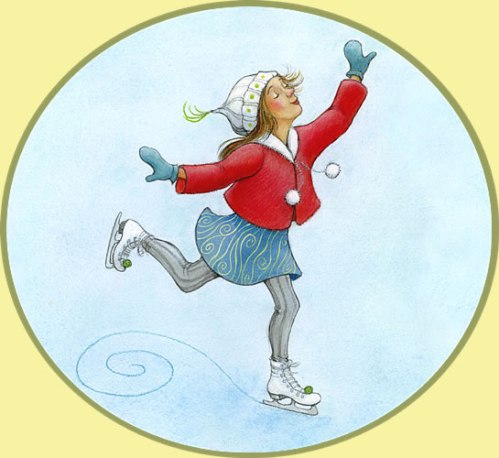
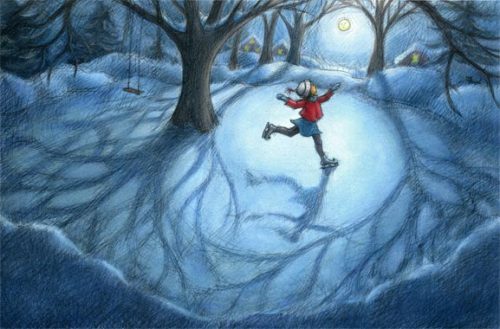

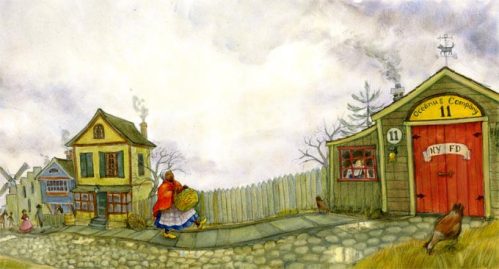
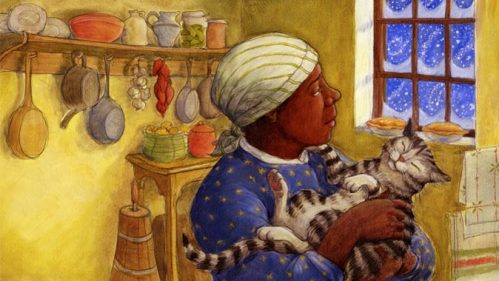





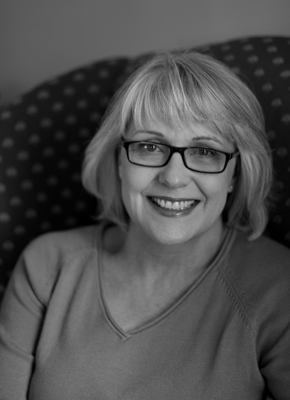 Joanne Friar grew up in New Bedford, Massachusetts, an old New England city full of 19th century mills and fishing boats. She earned her Bachelor of Fine Arts degree from the University of Massachusetts/Dartmouth where she studied illustration and photography.
Joanne Friar grew up in New Bedford, Massachusetts, an old New England city full of 19th century mills and fishing boats. She earned her Bachelor of Fine Arts degree from the University of Massachusetts/Dartmouth where she studied illustration and photography. 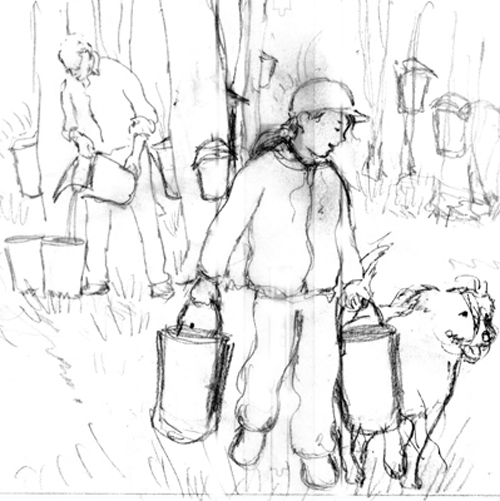
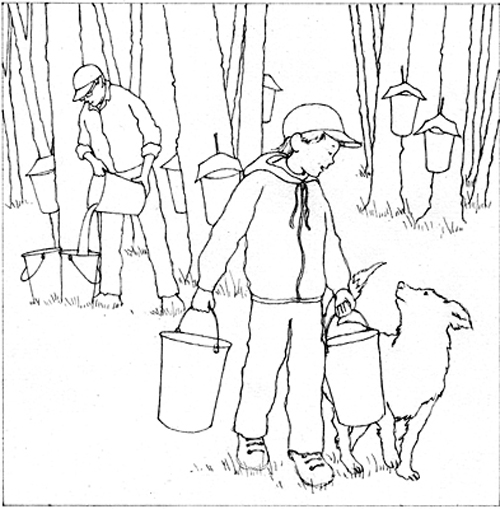
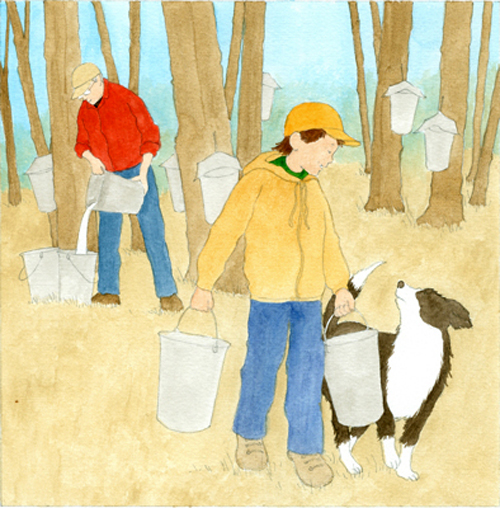
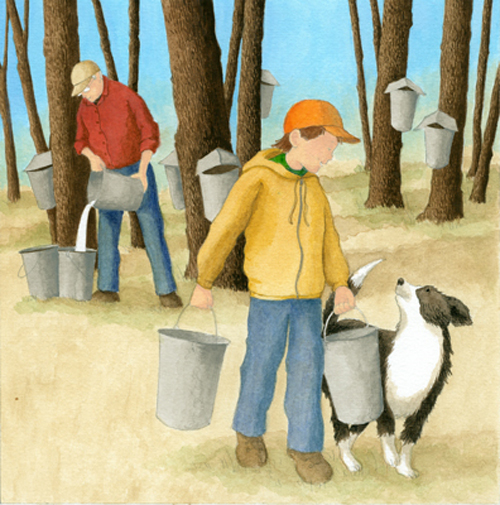

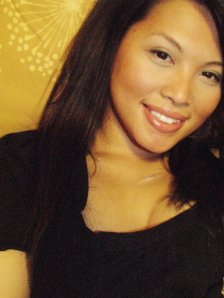 This week I have the pleasure of introducing you to Nina Mata. You may recognize her first piece of art, since it is one that she sent in to be shown off with the other February Illustrations. Nina has been drawing for as long as she can remember. In 1996, she attended the High School of Art & Design where she concentrated in Commercial Arts minored in cheerleading, film, and boys. In 2004, she switched from Fine Arts and majored in Illustration at The Fashion Institute of Technology.
This week I have the pleasure of introducing you to Nina Mata. You may recognize her first piece of art, since it is one that she sent in to be shown off with the other February Illustrations. Nina has been drawing for as long as she can remember. In 1996, she attended the High School of Art & Design where she concentrated in Commercial Arts minored in cheerleading, film, and boys. In 2004, she switched from Fine Arts and majored in Illustration at The Fashion Institute of Technology. 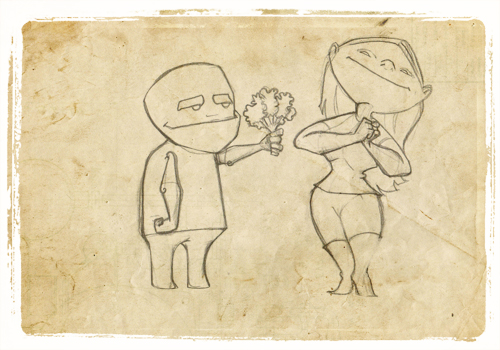
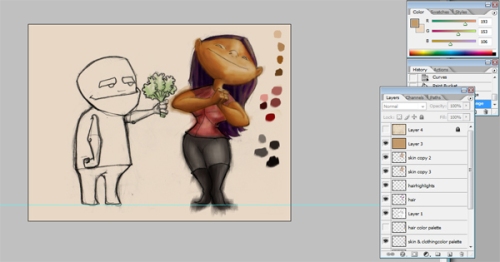
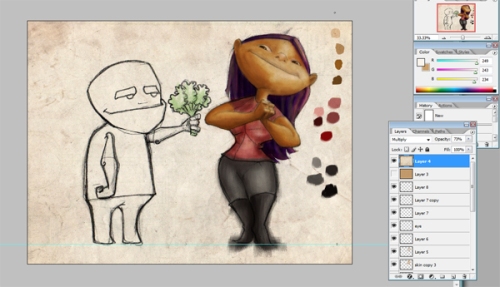
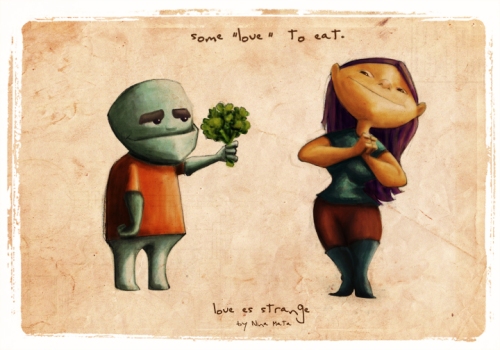
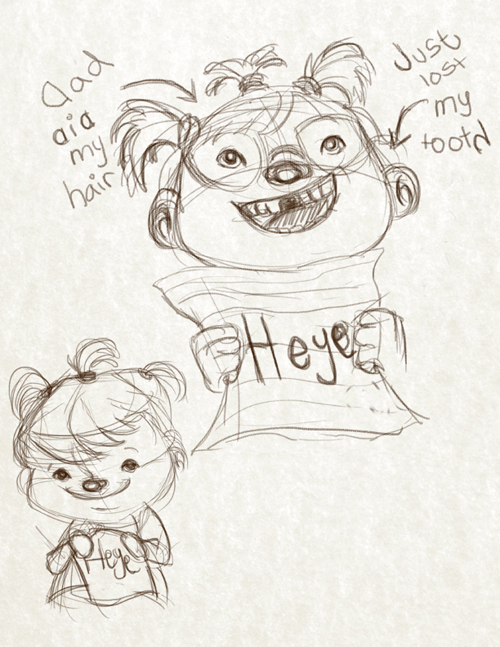
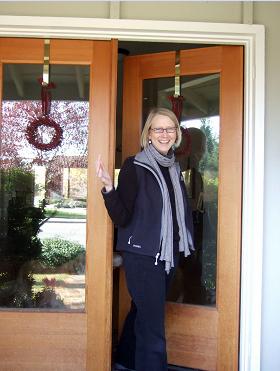 I picked up Kris Aro McLeod’s postcard this past summer at the SCBWI Conference in LA and I am very happy to share her talent with you. Her art captivated me, as it seems to have done with Cricket, Spider, and Ladybug Magazines, and Shoofly, an audiomagazine for children.
I picked up Kris Aro McLeod’s postcard this past summer at the SCBWI Conference in LA and I am very happy to share her talent with you. Her art captivated me, as it seems to have done with Cricket, Spider, and Ladybug Magazines, and Shoofly, an audiomagazine for children. 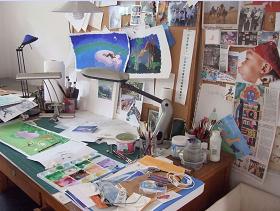
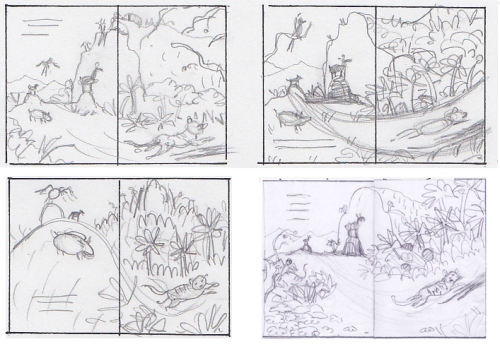
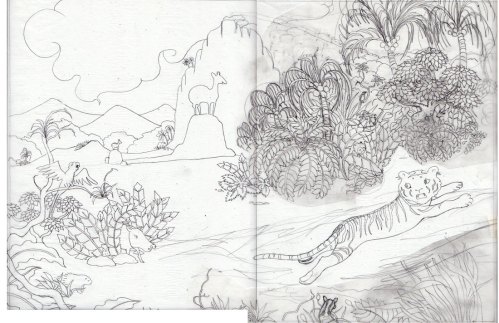
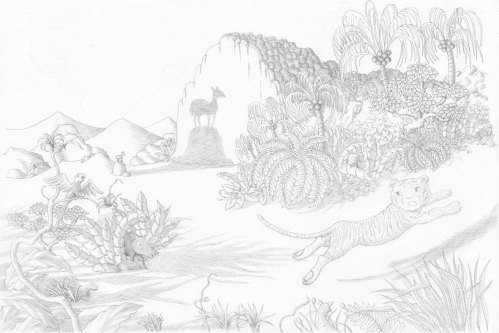
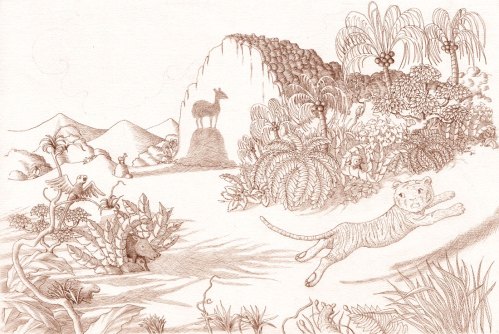









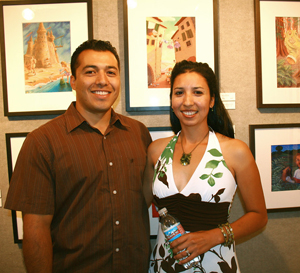 Christina Forshay was born and raised in sunny California, where she lives with her amazing husband and the two cutest kids in the world!
Christina Forshay was born and raised in sunny California, where she lives with her amazing husband and the two cutest kids in the world!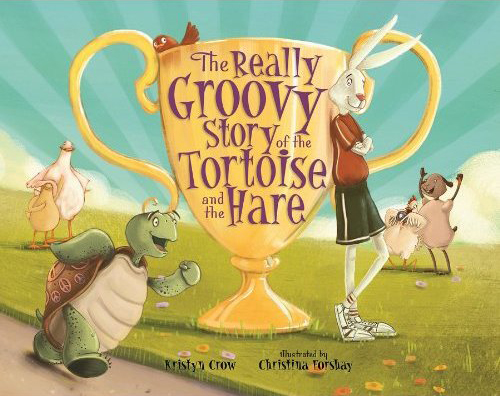
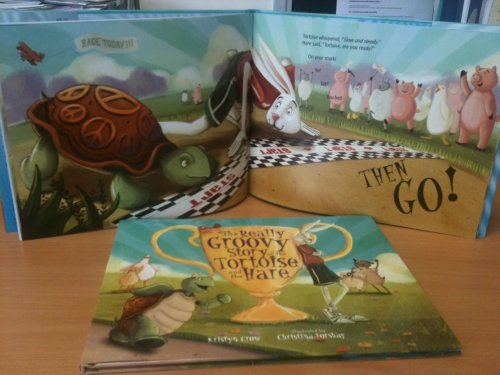

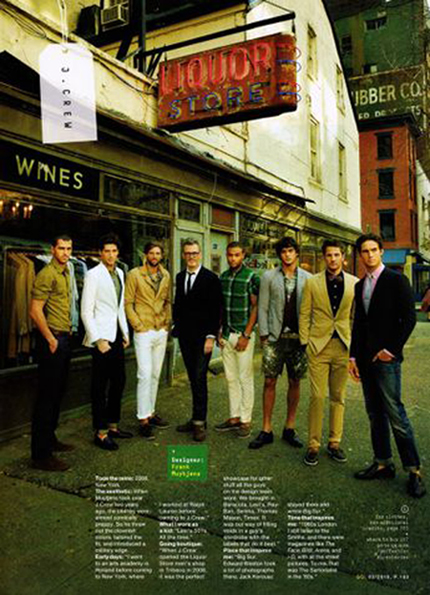
 This week we have the very talented illustrator Mary Reaves Uhles. I know you are going to enjoy your visit with her. Mary has worked for over a decade doing illustration for children. Her pieces have been featured in books and magazines around the world. Prior to beginning her career as a freelance illustrator, Mary worked as an animator on projects for Warner Brothers and Fisher-Price Interactive. To this day her work features a cinematic quality essential to bringing characters to life. Her illustrations have been featured in multiple publishing showcases in the South and she was featured in the 2005 edition of SmartWriters.com New Voices Exhibition. Reproductions of her work are currently represented by ZaPow Gallery in Asheville, NC. A PAL member of the Society of Children’s Book Writers and Illustrators, Mary lives with her family in Nashville, Tennessee.
This week we have the very talented illustrator Mary Reaves Uhles. I know you are going to enjoy your visit with her. Mary has worked for over a decade doing illustration for children. Her pieces have been featured in books and magazines around the world. Prior to beginning her career as a freelance illustrator, Mary worked as an animator on projects for Warner Brothers and Fisher-Price Interactive. To this day her work features a cinematic quality essential to bringing characters to life. Her illustrations have been featured in multiple publishing showcases in the South and she was featured in the 2005 edition of SmartWriters.com New Voices Exhibition. Reproductions of her work are currently represented by ZaPow Gallery in Asheville, NC. A PAL member of the Society of Children’s Book Writers and Illustrators, Mary lives with her family in Nashville, Tennessee.











Annie, I love your work. And my son loved his Robeez shoes when he was a baby.
Annie, Your illustrations make me smile! Love them. The boy and girl in the teacup with the sea monster in the distance . . . so adorable!
Really fascinating post! I have recently (since January) started doing all my thumbnail sketches in Paper 53 as well (I got a Pencil for Christmas). Now I want to look up all those cool apps mentioned and play a bit. Thanks for sharing! Great work too! :)
Annie, your illustrations are amazing, love them !
Really interesting and useful. I’m a writer (of picture book stories) and fine artist learning about illustration. I have used some of the digital tools you mention (Wacom Bamboo tablet, Paper by 53, Pro Create, Photoshop, Illustrator) but many that you mention are new to me. I’m especially interested in the recent/ongoing project for Benchmark…cards with images that a child could arrange into her own story). Thank you!